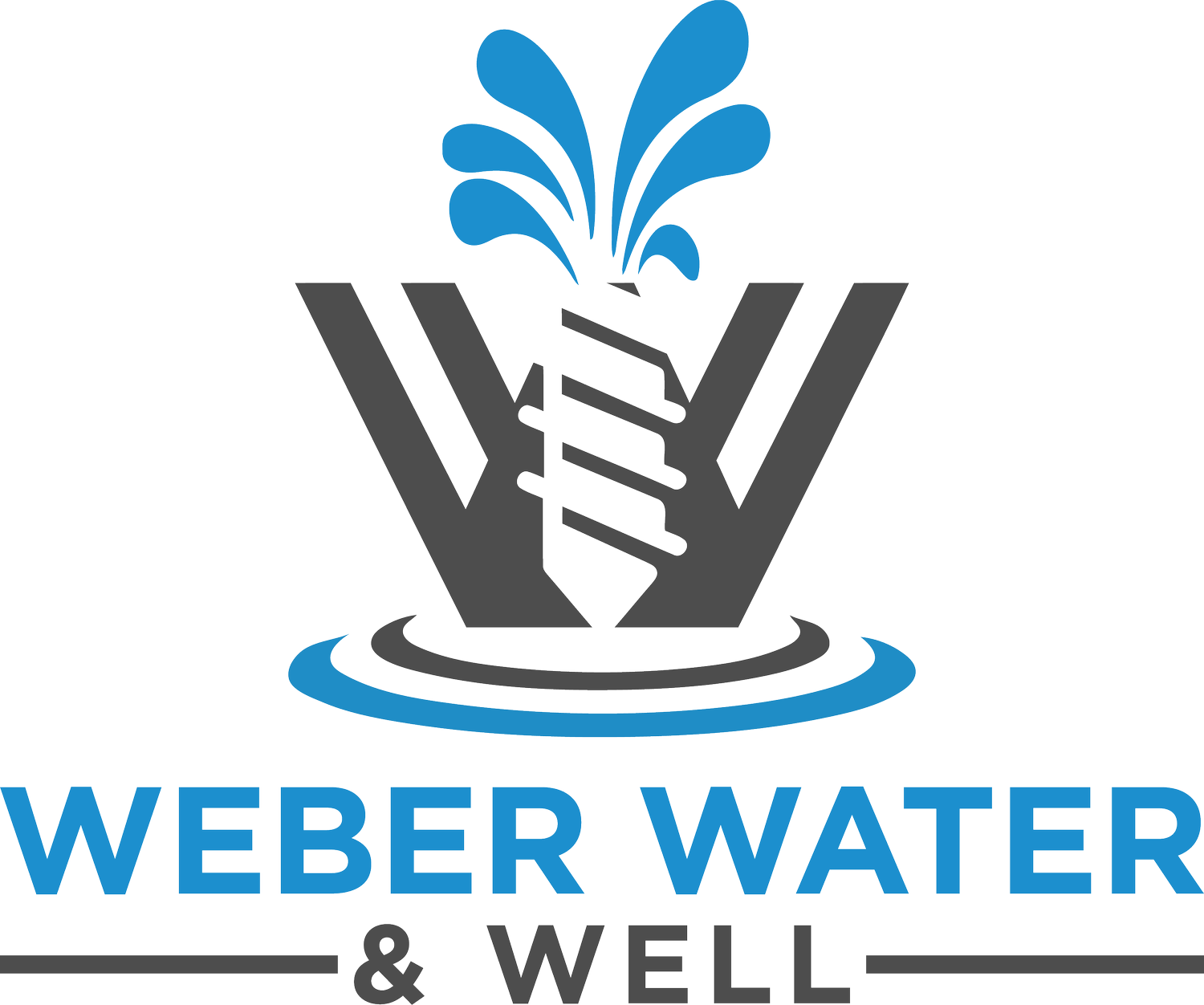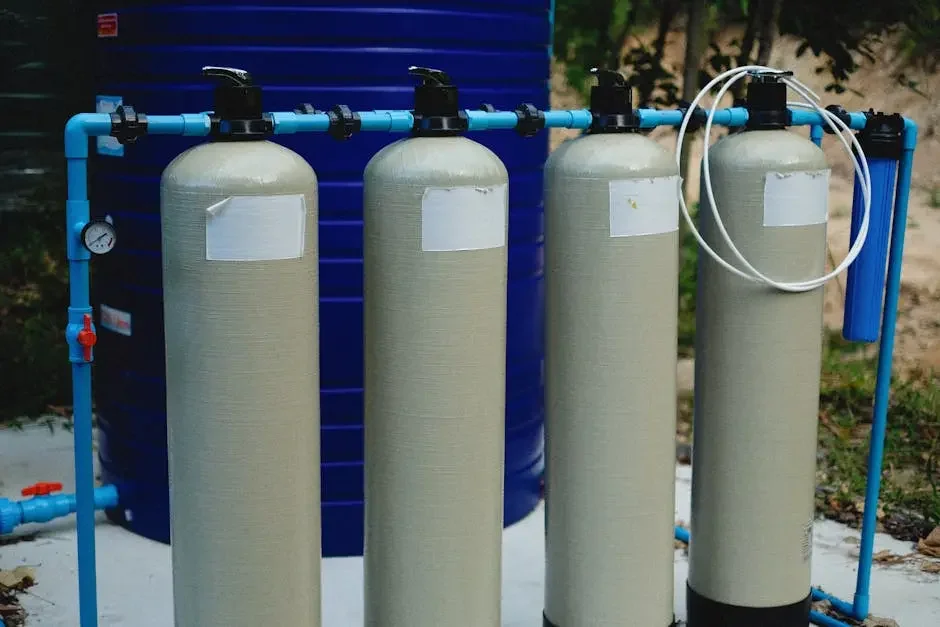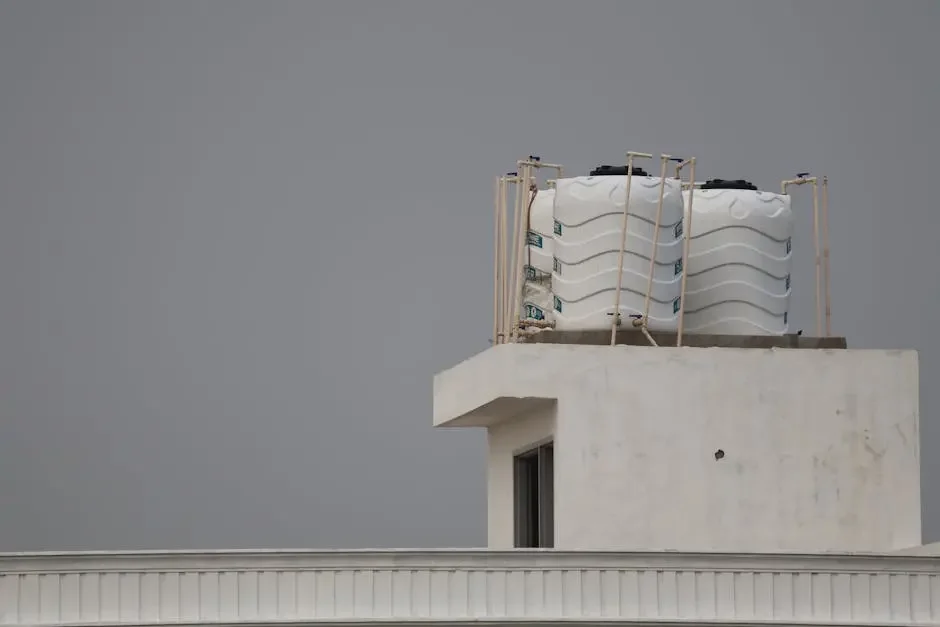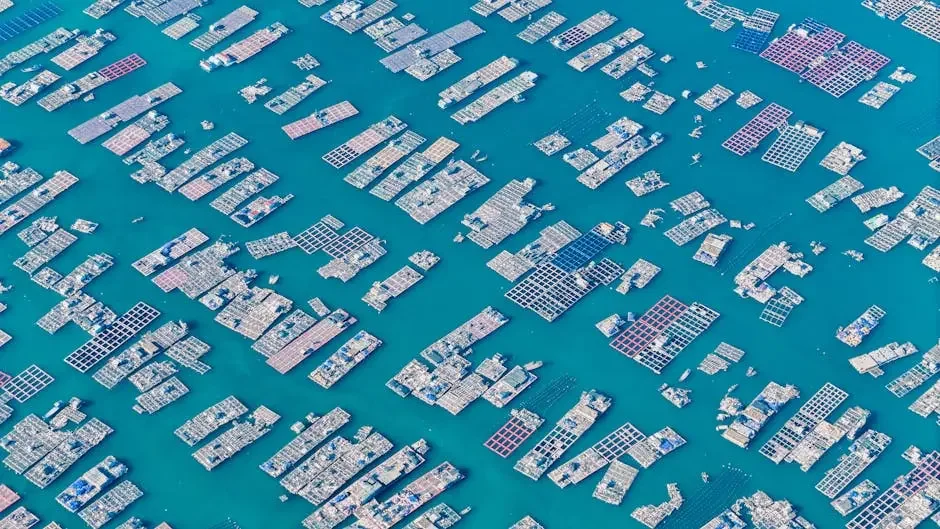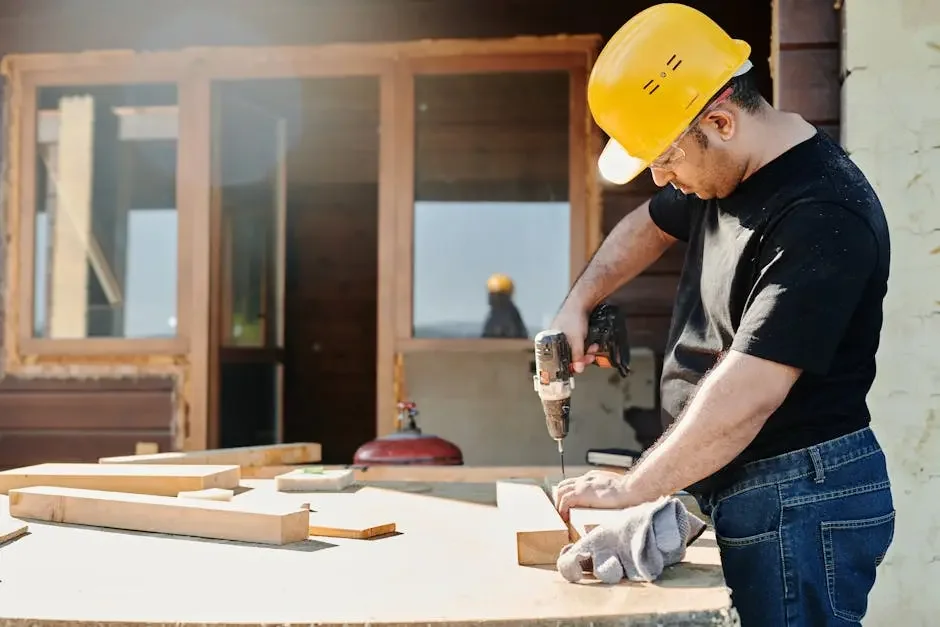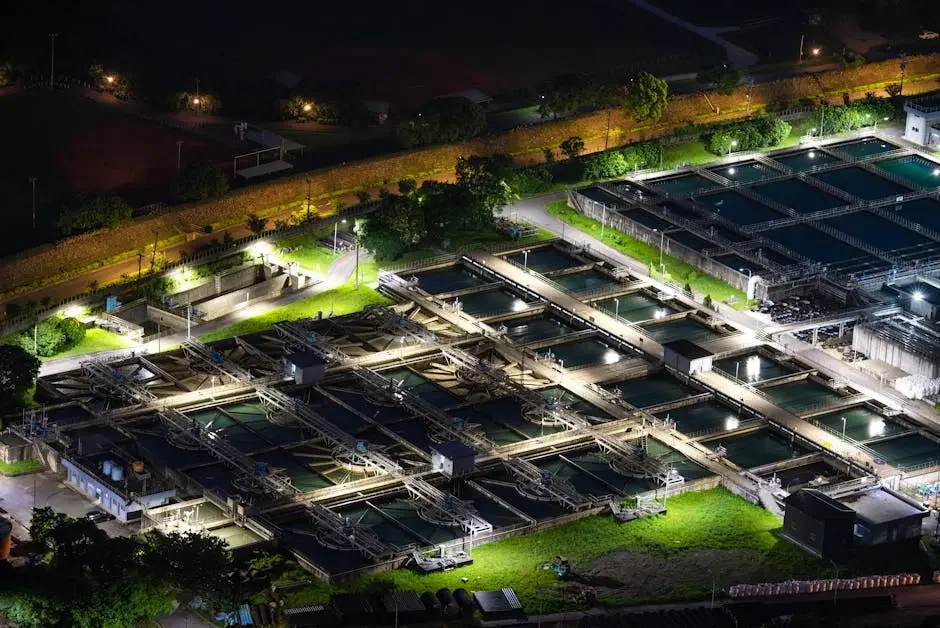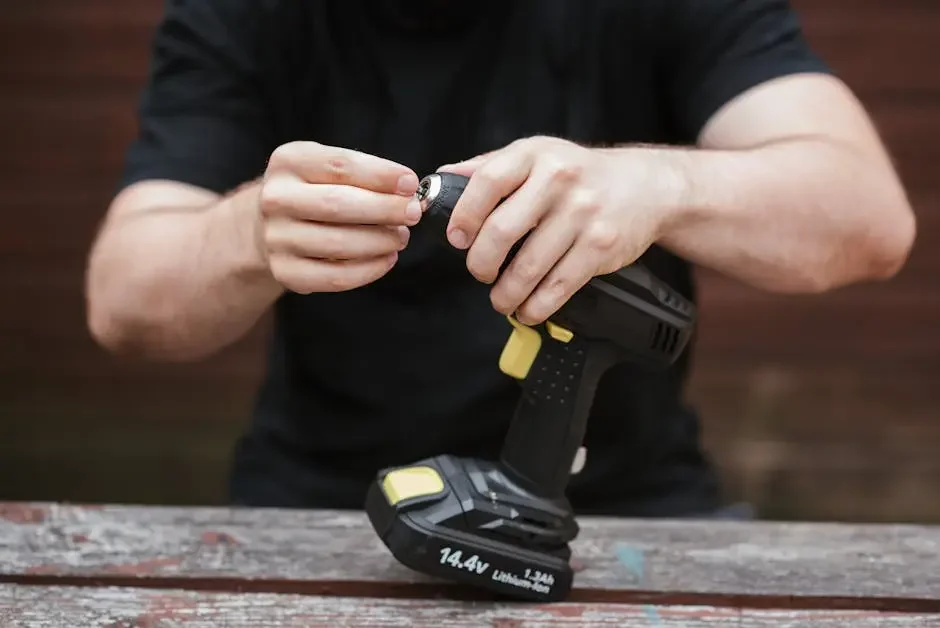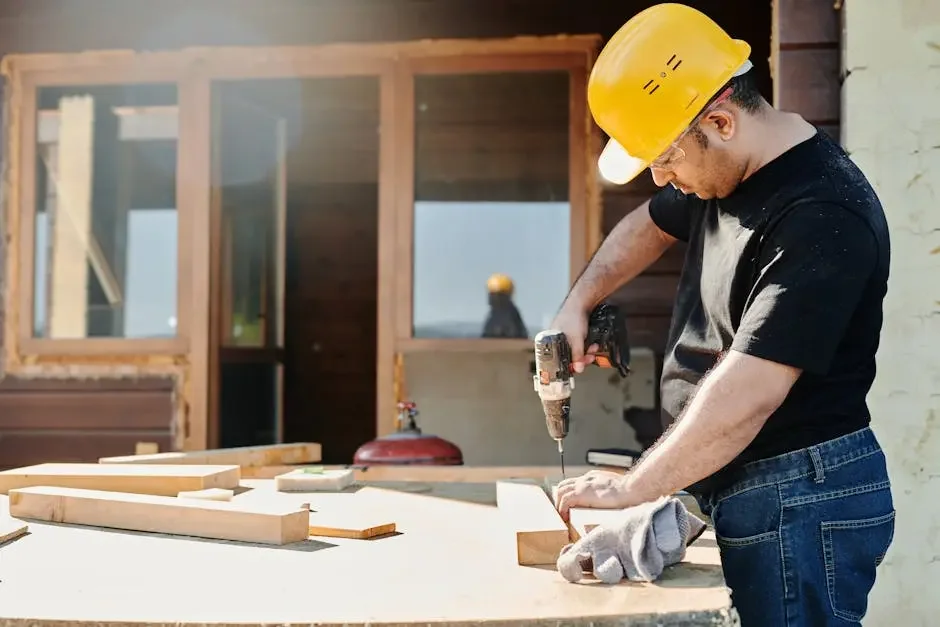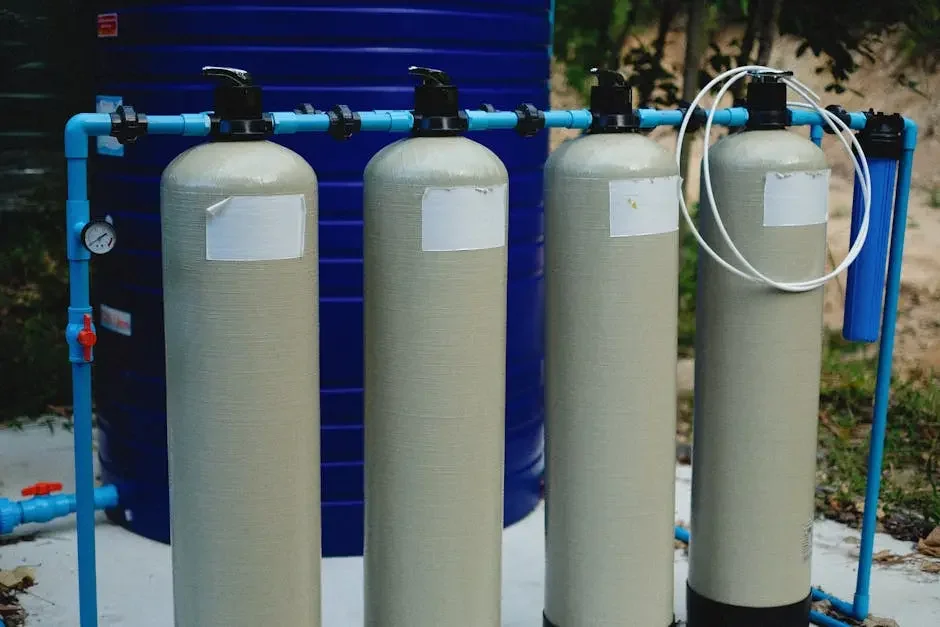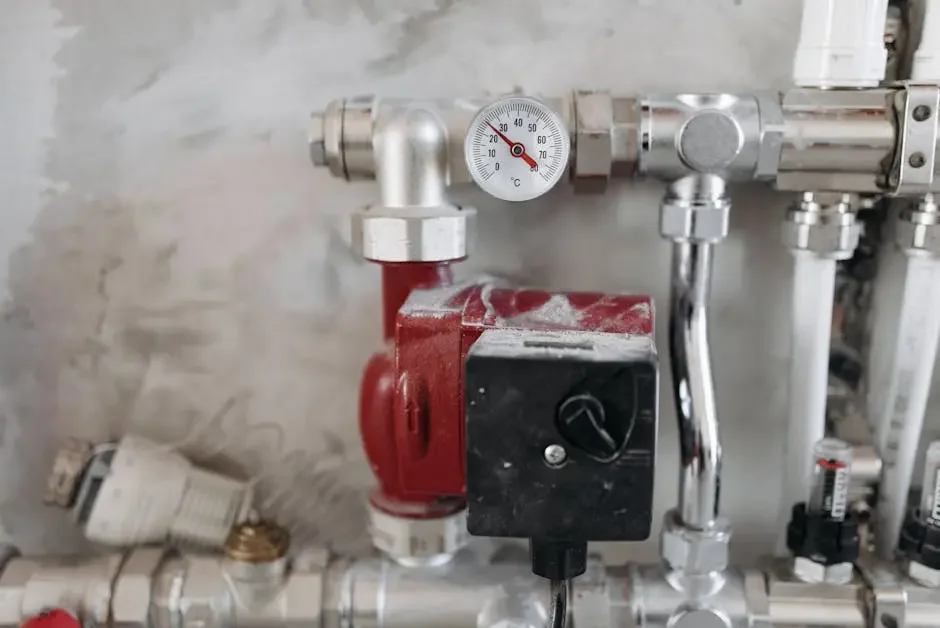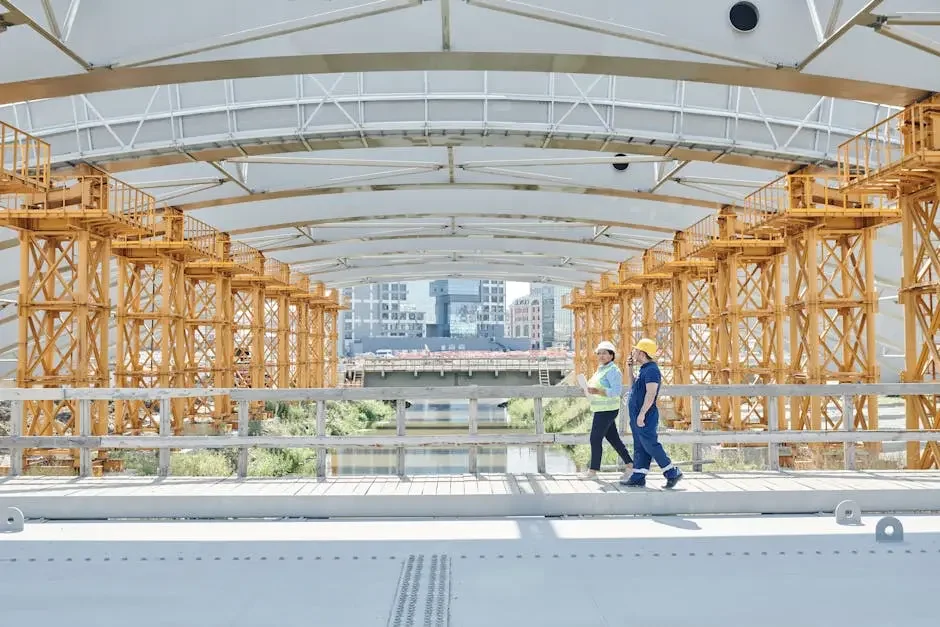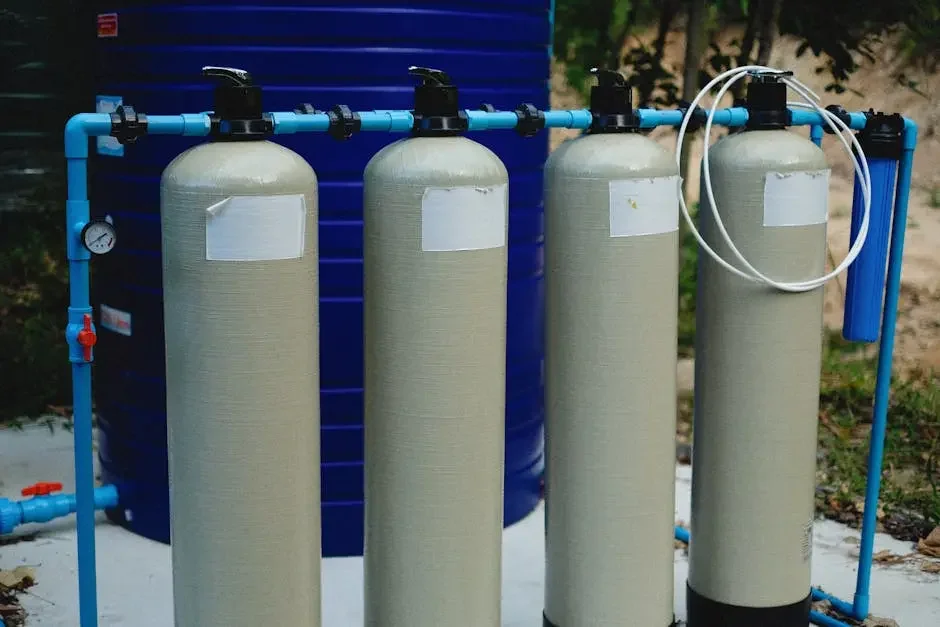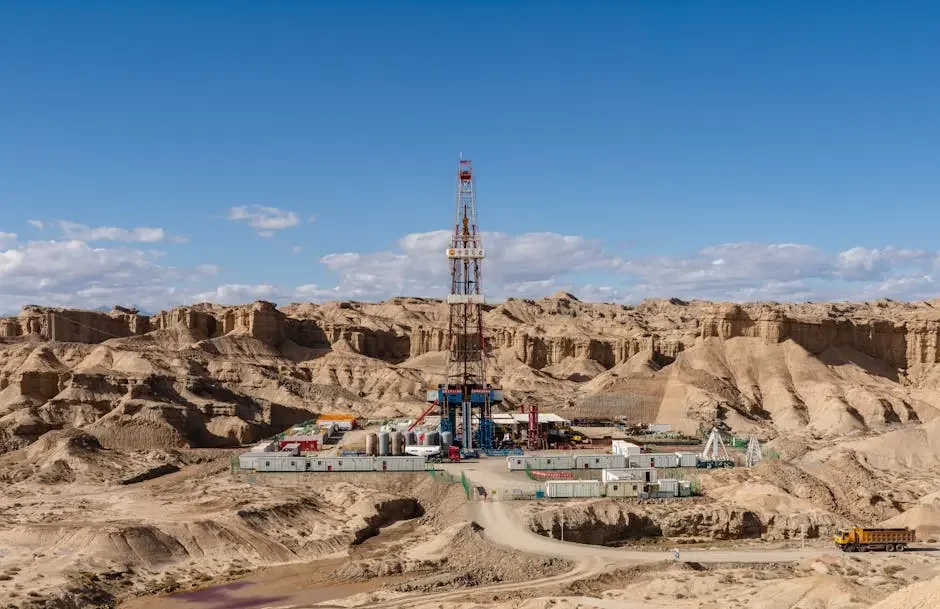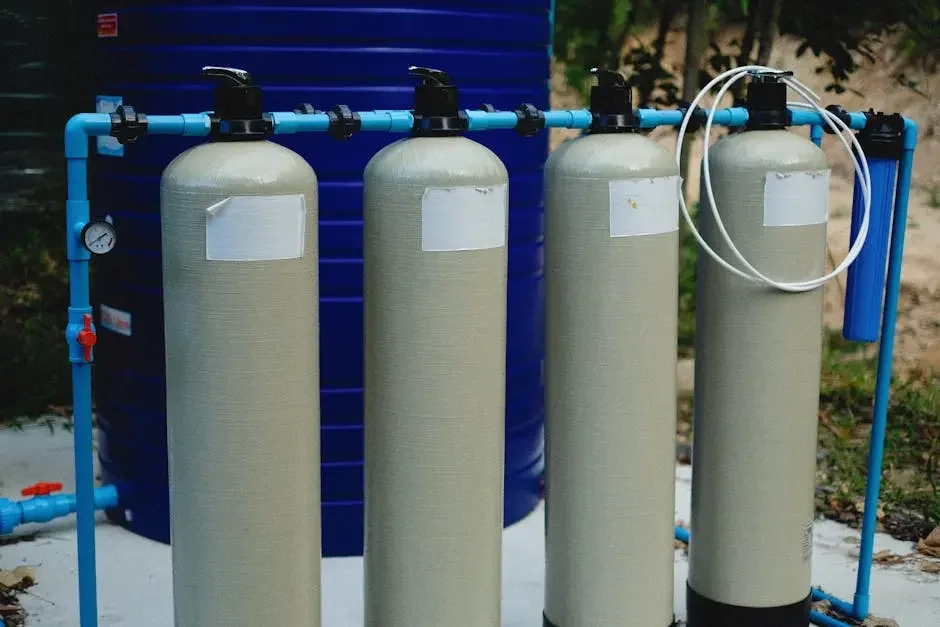15 Questions to Ask Your Well Drilling Contractors Before Starting a Project
Starting a well drilling project is a significant investment, and finding the right contractor is crucial to ensure quality work and a successful outcome. Before you begin, it's essential to ask the right questions to gauge the contractor's experience, methods, and customer service. This guide will provide you with key questions that will help you make an informed decision.
1. What Is Your Experience in Well Drilling?
Understanding a contractor's experience can give you insight into their expertise and likelihood of success in your project.
Experience is more than just years in the business; it also encompasses the various types of wells they have drilled. A contractor who has encountered different geological conditions or challenging environments is likely to be better equipped to handle any surprises that may arise during your project.
2. Can You Provide References from Past Clients?
>Ask for testimonials or references to gauge customer satisfaction and reliability.
Previous clients can offer firsthand accounts of their experiences, which can be invaluable. Inquire not only about the quality of work but also about the overall communication and professionalism throughout the drilling process.
3. What Types of Wells Do You Specialize In?
Finding a contractor who specializes in the type of well you need ensures they are well-versed in the specific challenges and solutions.
Different wells come with various requirements, whether they are residential, commercial, or agricultural. By understanding their specialization, you can better predict their capability to meet your needs.
4. What Equipment Will You Use?
>Inquiring about the tools and equipment used can indicate the level of professionalism and quality of work.
High-quality equipment can lead to more efficient drilling and a smoother overall process. A contractor who is transparent about their equipment shows a commitment to excellence that you want in your project.
5. What Is Your Estimated Timeline for Completion?
>Understanding the timeline helps you plan accordingly and ensures the contractor is on the same page.
A clear timeline can alleviate potential frustrations and allow for better coordination with other contractors. It's essential to discuss how delays are managed, as this will set expectations for the duration of your project.
6. How Do You Handle Permits and Regulations?
>A knowledgeable contractor should be well-versed in local regulations and be able to handle necessary permits.
Navigating red tape can be daunting, but a contractor with experience will know what permits are necessary and how to obtain them efficiently. This expertise can save you time, money, and headaches.
7. What Is Included in Your Quotation?
>Clarifying what services are included in the bid helps you avoid unexpected costs later on.
Make sure to break down costs transparently so you understand what you're paying for. Hidden fees can sneak up on you, so knowing exactly what to expect financially is essential for any project.
8. Do You Offer Any Guarantees or Warranties?
>Asking about guarantees can give you peace of mind regarding the quality of work and materials.
A solid warranty can protect your investment for the long haul. Be clear about what is covered and for how long, as this can be a deciding factor in choosing your contractor.
9. What Are Your Payment Terms?
>Understanding payment structure ensures there are no surprises and helps manage your budget effectively.
Discussing payment schedules upfront allows for better financial planning. It's also smart to clarify whether there’s a deposit needed prior to work beginning and how final payments will be handled.
10. What Happens if There Are Problems During Drilling?
>It's crucial to know how the contractor addresses potential challenges to gauge their problem-solving capabilities.
A proactive contractor will have strategies in place to manage unexpected issues. It’s wise to dig into how they communicate these problems and what solutions they propose, as this can greatly affect your project's success.
11. How Do You Ensure Environmental Safety?
>A responsible contractor should prioritize environmental safety and have measures in place to protect local ecosystems.
Checking on their environmental practices speaks volumes about their values. Responsible contractors not only comply with regulations but also go the extra mile to ensure that drilling activities do not disturb the surrounding habitat.
12. Will You Be Present During the Drilling Process?
>Knowing if the contractor will be on-site can assure you that any issues can be addressed promptly during the process.
Having the contractor available on-site means better management of the project and immediate resolution of issues. It's a good practice to have direct access to them for questions and concerns as they arise.
13. What Are Your Rescheduling Policies?
>Understanding how the contractor handles schedule changes is important for managing expectations.
Plans can change, and knowing how flexible your contractor is can save you from additional stress. Discussing their process for unavoidable rescheduling or delays helps create a more harmonious working relationship.
14. Can You Explain Your Drilling Process in Detail?
>A contractor who can clearly outline their drilling process demonstrates transparency and confidence in their work.
This detailed explanation should include the methods used, the timeline, and any potential issues they foresee. A deep understanding of their drilling process will not only build your trust but also allow you to feel more at ease about what's happening on your property.
15. How Will You Communicate Progress and Updates?
Effective communication is key, so understanding how the contractor will keep you informed can enhance the overall project experience.
Regular updates can help you feel more engaged in the project and lessen any anxiety about the work being done. Make sure to agree on communication methods and frequency to maintain a healthy flow of information.
12 Common Misconceptions about Water Purification Systems and the Truth Behind Them
Water purification systems are essential for ensuring we have access to clean and safe drinking water. However, there are many misconceptions surrounding these systems that can lead to confusion and misinformation. In this article, we will debunk twelve common myths about water purification systems, shedding light on the truths that every consumer should know.
1. All Water Purification Systems Are the Same
Many people think that all water purification systems work the same way, but different types employ various methods and technologies. Understanding these differences is crucial. For instance, some systems use activated carbon, while others rely on reverse osmosis or UV light. Each method has its strengths and weaknesses, tailored to specific contaminants. Therefore, a one-size-fits-all approach might not deliver the clean water you expect.
Moreover, the choice of a system might depend on factors such as the source of your water and your specific needs. Some households might benefit from multi-stage filtration systems, which combine several methods to achieve greater purity. The heart of the matter is that educating yourself about the options can significantly enhance water quality and health.
2. Boiling Water Is Enough for Purification
While boiling water is certainly an effective method for killing microorganisms, it falls short against various contaminants. Boiling kills bacteria and some viruses, making it a reliable option in emergencies. However, it doesn't remove chemicals, heavy metals, or sediments that may lurk in your supply. Let’s say you live near industrial areas; the potential for chemical contamination increases, thus boiling alone might not cut it.
Additionally, consider that boiling water can actually concentrate some pollutants if present, because the water evaporates while contaminants remain. Therefore, relying solely on boiling could give a false sense of security about your water's purity. Pairing boiling with a purification system gives a comprehensive approach to ensuring your water is genuinely safe for consumption.
3. Filtered Water Is Always Pure
Just because water is filtered doesn't mean it's free from all contaminants. In reality, a filter acts more like a net, catching some impurities while letting others pass through. Depending on the type of filter, you might remove chlorine and sediment, but other harmful substances could sneak by unnoticed. Regular maintenance and replacement of filters are essential for effective purification.
It's easy to assume that a simple filtration system guarantees pure drinking water, but this is a misconception that can lead to serious health risks. The key is to understand the filtration technology you’re using and ensure it's designed to remove the specific contaminants relevant to your water supply. A little research goes a long way in protecting your health!
4. Chemical Treatments Are Unnecessary
Many believe that chemical treatments are harmful and unnecessary, but they can be highly effective in eliminating specific contaminants when used correctly. For example, chlorine is frequently used in municipal systems to disinfect water. While some may raise concerns about its potential health risks, it's important to note that when used in appropriate concentrations, the benefits can far outweigh the drawbacks.
Additionally, advanced chemical treatments can target stubborn pollutants that mechanical filters might miss. Take chlorine dioxide, for instance; it can effectively neutralize bacteria and viruses without forming harmful byproducts like chlorine does. Thus, rather than outright dismissing chemical treatments, consumers should weigh the specific context and types of contaminants involved to make informed choices.
5. Reverse Osmosis Removes Minerals
While reverse osmosis (RO) does remove some beneficial minerals, many systems are designed to reintroduce essential minerals back into the water after purification. This way, you can enjoy the health benefits of minerals like calcium and magnesium without sacrificing water purity. It’s a bit of a balancing act, and the technology has evolved to ensure you don’t lose all that is good in the process.
Interestingly, some people might actually prefer the taste of water that has been mineralized after purification, finding it fresher compared to distilled water, which can taste flat. Ultimately, it’s about choosing the right system that aligns with your health needs while ensuring safe drinking water.
6. UV Purification Is Only for Emergencies
Ultraviolet (UV) purification is effective for regular use and not just emergencies. Many households are unaware that UV technology is a reliable method for destroying bacteria, viruses, and other pathogens in your water supply. Not only does it eliminate these harmful microorganisms, but it does so without adding any chemicals or changing the taste of the water.
UV purification can easily be integrated into different water purification systems. By utilizing this technology, you can have peace of mind knowing that your routine drinking water is getting an extra layer of protection from harmful contaminants. It’s not just for disaster preparation; it’s a proactive approach to daily hydration!
7. You Don't Need Purification for Tap Water
Despite regulations, tap water can still contain a variety of contaminants ranging from agricultural runoff to lead from aging pipes. While municipal water is treated, this doesn’t guarantee complete safety. Using a purification system can provide additional safety and peace of mind, especially for sensitive individuals like children, the elderly, or those with compromised immune systems.
Moreover, some city water supplies may be underreported for issues like contamination during natural disasters. Investing in a good purification system can serve as a buffer against unforeseen circumstances, ensuring that when you turn on the tap, you feel confident that your water is clean and safe. After all, it’s your health at stake!
8. All Purification System Brands Are Reliable
Not all brands meet the same standards for quality and effectiveness, leading to misconceptions about the reliability of systems available in the market. It’s crucial to research and choose a reputable brand that has been tested and validated by safety standards. Some brands might make lofty claims about their products but lack independent reviews or scientific backing.
Consumer reviews, certifications, and transparency regarding testing methodologies can help you make an informed choice. Remember that a trusted brand is more than just a label; it’s about reliability, safety, and performance. Taking the time to choose wisely can ultimately contribute to safer drinking water for you and your family.
9. Water Purification Systems Are Too Expensive
While some systems can be costly, there are affordable options that provide effective purification without breaking the bank. Investing in water purification should be viewed as an essential health choice rather than an expense. Some systems are designed to be budget-friendly and can deliver great results without compromising on quality.
Additionally, consider the long-term savings; using a purification system can cut down on bottled water purchases and help avoid health issues related to contaminated water down the line. Overall, weighing the initial investment against the potential benefits can reveal that having a home purification system might be easier on your wallet than you think!
10. You Can Set It and Forget It
Many users believe purification systems require no maintenance, but regular checks and filter replacements are necessary to ensure efficiency. Much like a car needs regular oil changes, your purification system benefits from routine upkeep. Neglecting this could lead to a decrease in effectiveness, making your water less safe over time.
The good news is that many systems now come equipped with indicators to remind you when it's time for maintenance. A little attention can go a long way in keeping your drinking water not just safe but delightful too. So, don’t fall into the trap of thinking it’s a fire-and-forget solution!
11. Bottled Water Is Safer Than Filtered Water
Bottled water isn't always safer or cleaner than filtered tap water. Although it might seem more convenient, environmental concerns and potential contaminants exist in both options. For one, plastic bottles can leach chemicals into the water, especially in hot conditions. Researchers have found that certain brands of bottled water can contain microplastics!
Additionally, bottled water is often just repurposed tap water that has undergone some filtration. Therefore, investing in a good quality filtration system at home can be a more responsible and sustainable alternative. You’ll enjoy the same convenience but with the benefit of knowing exactly how your water is purified, all while doing your part for the planet.
12. Purification is Only for Rural Areas
Water purification is beneficial in urban areas too. Pollution can affect city water supplies, making purification necessary even in densely populated areas. Urban water sources are susceptible to issues like runoff from roads, industrial contamination, and even airborne pollutants settling into water systems.
Ignoring the need for purification in these regions can be an oversight with serious consequences. Tapping into a home purification system can augment municipal efforts and provide a second line of defense against any risks posed by city water supplies. Ultimately, water purification is about safeguarding health, no matter where you live.
10 Signs Your Water Well Needs Rehabilitation
If you rely on a water well for your home or farm, ensuring its health is crucial for your water quality and supply. Over time, wells may experience various issues that indicate they need rehabilitation. In this post, we'll explore ten signs that your water well might need some attention, helping you maintain a safe and reliable source of water.
1. Declining Water Quality
If you've noticed changes in the taste, odor, or appearance of your water, it may signal an underlying issue that requires rehabilitation. This could be due to several factors, such as infiltration of contaminants or changes in the underground water source. Ignoring these changes can pose risks to your health, so it's essential to take action sooner rather than later.
Moreover, if you find that your water has a strange color or sediment floating around, it’s a clear indication that the well environment has been compromised. This could be a result of rust from pipes or mineral deposits leaching into your water supply, necessitating a closer inspection of the well for rehabilitation.
2. Increased Pump Runtime
Is your pump running longer than usual to bring water to the surface? This can indicate a drop in water levels or a blockage in the system. Over time, increased runtimes can lead to premature wear on your equipment and higher energy bills—especially if your system is working harder than it should.
Additionally, if you notice your pump is cycling on and off more frequently, it might suggest that your well isn't keeping up with the demand. This cycling can put extra strain on your pump, making it essential to consider rehabilitation to restore functionality and efficiency.
3. Frequent Equipment Problems
If you're constantly calling for repairs on your well’s pump or other equipment, it might be a sign that your well needs rehabilitation. Frequent malfunctions can be both frustrating and costly, signifying that your system is struggling to maintain optimal performance.
Moreover, persistent issues like malfunctioning control switches or electrical components are red flags that shouldn't be ignored. Each repair call adds up, and it might be more cost-effective to invest in a thorough assessment and possible rehabilitation to prevent future breakdowns.
4. Declining Water Flow Rate
A noticeable decline in water flow can be due to various factors, such as sediment buildup in the well or damage in the well casing. This change may not be immediately obvious but becomes evident when simple chores—like filling a bucket or watering plants—take longer than normal.
If the water flow continues to decline, it can lead to serious issues, including inadequate water supply for household needs. Observing and addressing these changes early can be key to ensuring your water well remains dependable.
5. Strange Sounds or Vibrations
Unusual noises or vibrations coming from your well system can indicate that something isn't right and may require professional assessment. Whether it's a humming sound or rattling, these auditory signals can often serve as early warnings of system malfunctions.
Ignoring these sounds could lead to bigger problems. Professional help can determine if it’s something as simple as a worn-out part or more complex requiring rehabilitation to maintain the integrity of your water supply.
6. Presence of Contaminants
Finding bacteria, nitrates, or other contaminants in your water is a warning sign that your well needs immediate attention. Regular water testing is essential to monitor for these hazardous substances which can easily compromise your water supply.
Even minor levels of contaminants can have significant health implications over time. If you suspect that your well is compromised, don’t hesitate to consult professionals who specialize in well rehabilitation to restore water quality.
7. Changes in Water Temperature
If your well water starts to feel warmer or colder than usual, it could indicate changes in your underground water source. Fluctuations in temperature might suggest mixing with surface water or shifts in groundwater flow patterns, both of which warrant further investigation.
Understanding these temperature changes not only helps maintain the quality but can prevent adverse health effects related to contaminated water. Investigating the cause might lead you to consider rehabilitation to stabilize the water supply.
8. Visible Casing Damage
Inspecting your well casing for visible damage or corrosion is crucial. Any signs of wear can lead to larger issues down the line. Look for cracks, rust, or other deterioration—these can all be indicators of a failing well structure that requires immediate attention.
Casing integrity is fundamental to keeping your water supply safe from surface contaminants. Don't overlook the importance of this part of the well system; if damage is visible, professional assessment and possible rehabilitation should be prioritized.
9. Increased Presence of Minerals
If you notice increased sediment or mineral deposits in your water, it could suggest that your well needs rehabilitation to enhance water clarity and safety. High levels of minerals such as calcium or magnesium can lead to hardness, affecting not just your drinking water but also your appliances and plumbing.
It's essential to address these issues not only for the sake of clean drinking water but also for the longevity of your home systems. Regular testing and proactive measures can help maintain the quality of your water.
10. Unusual Growth Around the Well
Moss, algae, or other unusual growth around your well head may indicate moisture issues that could impact your well's integrity. These growths often thrive in the presence of excess water or leakage, suggesting that rehabilitation may be necessary to fortify well structure.
Ignoring these signs can lead to more serious problems, not only affecting water quality but also risking damage to the surrounding environment. Regular inspection of the area around your well is crucial to catch these indicators early.
Solar Water Pumping: A Sustainable Solution for Rural Areas
In many rural areas, access to clean water is a persistent challenge. Traditional methods of water sourcing often fall short, putting strain on communities and their resources. Thankfully, solar water pumping offers a beacon of hope. This blog will dive into the transformative impact of solar water pumping systems, exploring how they work, their benefits, and their potential to empower rural areas sustainably.
Understanding Solar Water Pumping Systems
Solar water pumping systems are designed to convert sunlight into energy that pumps water from various sources. This section will explore the key components of these systems, including solar panels, pumps, and controllers, and how they work together to create a reliable water supply.
Let's break it down: solar panels absorb sunlight and convert it into electrical energy. This energy powers the pump, which then draws water from a well, river, or other water sources. The controller plays a crucial role by regulating the system’s operations, ensuring that the pump functions efficiently based on the amount of sunlight available.
Additionally, solar water pumping systems come in various designs and sizes, making them adaptable to different environments and needs. For communities located in areas with abundant sunlight but limited infrastructure, these systems can be game-changers. By delivering a consistent water supply, they help reduce the arduous task of fetching water that many rural women and children face daily.
The beauty of these systems lies not only in their efficiency but also in their environmental friendliness. With no reliance on fossil fuels, solar water pumping minimizes carbon emissions, making it a sustainable choice for the planet. As we aim for a greener future, incorporating these systems can significantly impact community resilience.
Benefits of Solar Water Pumping for Rural Communities
Solar water pumping brings numerous advantages to rural communities, such as reduced dependence on diesel fuel, lowered operational costs, and minimal maintenance requirements. This section will delve into how these benefits can improve the quality of life in rural areas.
One major advantage is the decrease in operational costs. Traditional systems often incur high fuel costs and require regular repairs. With solar water pumps, once installed, maintenance needs are minimal, allowing communities to redirect funds towards other essential services like education or healthcare. Moreover, the savings on fuel alone can significantly boost local economies.
Furthermore, solar-powered systems are less susceptible to the supply chain disruptions experienced by diesel-powered pumps. If fuel prices rise or if there are shortages, communities with solar water pumps are shielded from such fluctuations, ensuring their access to water remains stable and reliable throughout the year.
Another important aspect is the empowerment of women and children. With efficient water delivery systems in place, fewer hours are spent walking long distances to fetch water. This benefits families by providing more time for education and income-generating activities, ultimately fostering community development.
Case Studies: Success Stories from Around the World
To illustrate the effectiveness of solar water pumping, this section will highlight various case studies from around the globe. By showcasing successful implementations, we will reveal how communities have transformed their water access through sustainable solar solutions.
In India, for instance, a village in Rajasthan implemented a solar water pumping system that successfully provided irrigation for local farmers. The results were remarkable. Farmers reported increased crop yields due to better access to water, which in turn improved food security for their families and the community at large.
Similarly, a remote community in Kenya benefited from a solar water pump by reducing water collection times significantly. Women, who traditionally spent the most time fetching water, now have three extra hours a day to dedicate to education and income-generating projects, breaking the cycle of poverty.
These success stories illustrate that the adoption of solar water pumping systems can lead to broader transformations in rural communities, fostering not only improved water access but also educational and economic advancements.
Challenges and Considerations
While solar water pumping presents many benefits, there are also challenges to consider. This section will address issues such as upfront costs, installation challenges, and the importance of training local technicians to ensure these systems operate effectively.
The initial investment can be a significant hurdle for many rural communities. Although the long-term savings are notable, the upfront costs for solar panels, pumps, and installation can be daunting. It's crucial for stakeholders to explore funding options, grants, or partnerships with organizations that focus on sustainable energy solutions.
Installation can also present challenges. In some areas, getting the necessary materials to remote locations can be tough, and finding skilled labor for installation might be an issue. Collaborating with non-profits or government agencies that specialize in rural development can help bridge these gaps.
Moreover, once the systems are installed, maintaining them requires local expertise. Training local technicians ensures that communities can perform regular maintenance and repairs. This training is vital for the long-term success of solar water pumping systems, as it empowers communities to take ownership of their project.
The Future of Water Accessibility
Looking ahead, solar water pumping holds promise for expanding water accessibility in even the most remote regions. This section will discuss the potential for technological advancements, policy support, and community involvement in maximizing the impact of solar water pumping systems.
Technological advancements in solar energy are continually improving the efficiency and affordability of solar water pumps. Innovations in battery storage, for instance, will allow these systems to operate around the clock, ensuring communities have access to water even during overcast weather or at night. This would further enhance reliability and access.
Policy support is another essential factor. Governments and institutions need to recognize the importance of sustainable water solutions and prioritize investments in solar water pumping technologies, creating incentives for its adoption. With proper support, the scaling of these systems can provide a broader impact.
Community involvement is crucial for ensuring the success of solar water pumping projects. Engaging local residents not only fosters ownership but also raises awareness about the importance of sustainable practices. By working together, communities can advocate for the resources and support needed to implement and maintain these systems effectively.
Embracing the Future of Water Access
As we move towards a more sustainable future, solar water pumping systems present an innovative solution to the water access challenges faced by rural areas. By harnessing the power of the sun, we can provide clean water to those in need while promoting environmental stewardship. It’s time to embrace this technology for a brighter, more sustainable tomorrow.
Off-Grid Water Innovations: Ensuring Reliable Water Supply Anywhere
In a world where access to reliable water sources is becoming increasingly crucial, innovative off-grid water solutions are paving the way for sustainability and independence. This blog will explore some groundbreaking technologies and methods that help provide a steady water supply, no matter where you are. Whether you're living off the beaten path or just looking to be more self-sufficient, these innovations could change the way you think about water access.
The Importance of Off-Grid Water Solutions
Understanding the significance of reliable water sources in remote areas is essential. Off-grid water solutions enhance self-sustainability and can significantly reduce dependence on traditional water systems. This shift not only empowers individuals but also promotes resilience against droughts and other climate-related challenges.
In many cases, local water infrastructure may be lacking or non-existent, making it imperative to explore alternative solutions. By investing in technology that generates, captures, and purifies water independently, we take a huge step toward self-reliance. This can be particularly important in regions where extreme weather makes conventional water supplies unreliable.
Moreover, embracing off-grid water innovations fosters a mindset of sustainability. By choosing solutions that minimize waste and optimize resource use, we're not just solving an immediate problem; we're contributing to a longer-term vision for our planet.
Rainwater Harvesting: Nature's Free Resource
Rainwater harvesting is an age-old practice revitalized by modern technology. Collecting rainwater not only conserves water but also harnesses a renewable resource that many overlook. We'll discuss how to effectively capture and store rainwater, making it an essential resource for any off-grid setup.
To embark on this journey, start with a basic system that can range from simple barrels to complex filtration and storage units. It's all about scaling to your needs. When designed correctly, these systems can capture thousands of gallons of water in areas where rainfall is abundant, ensuring that you maintain a reliable supply all year round.
Additionally, let's touch on the legal aspect. In some regions, collecting rainwater might require permits or adherence to regulations. Familiarizing yourself with these guidelines can prevent potential issues down the line. By taking the time to understand these nuances, you position yourself not just as a consumer of water, but as a proactive steward of your environment.
Solar-Powered Water Pumps: Harnessing the Sun
Solar-powered water pumps are revolutionizing the way we access water. As the sun shines bright, these pumps work tirelessly to provide the necessary water supply for agriculture, home use, or livestock needs. Learn about the various types available and how they can be integrated into off-grid systems for a reliable supply.
Choosing the right solar pump often involves assessing your water requirements, available sunlight, and the setup cost. However, once installed, these systems tend to have low maintenance costs and can yield savings on energy bills over time. Best of all, they facilitate water access without contributing to your carbon footprint.
With advancements in technology, many modern pumps come equipped with battery systems, allowing for water access even during nighttime or cloudy weather. This reliability can be pivotal in emergencies or during periods of peak demand, offering peace of mind no matter the circumstances.
Water Filtration Technologies: Clean Water Anywhere
Accessing clean water is a priority, especially in off-grid living. We’ll dive into the latest water filtration technologies that ensure safe drinking water, even from the most unpredictable sources. From portable filters that you can take on outdoor adventures to more permanent installations for home use, the variety is staggering.
Consider the benefits of having a multi-stage filtration system. These setups can eliminate contaminants, harmful bacteria, and even heavy metals, leaving you with pure water that's safe to drink. In an age where pollution is a concern, investing in reliable filtration systems is a smart move.
Moreover, advancements in filtration have brought solutions that are not just efficient but also cost-effective. By using gravity or even solar energy to power these systems, you can enjoy the luxury of clean water with minimal investment over time. It’s a small step that can lead to monumental changes in your off-grid lifestyle.
The Role of Greywater Recycling in Off-Grid Living
Greywater recycling systems allow for the reuse of wastewater for irrigation and other non-potable needs. This practice enhances water efficiency in off-grid settings and minimizes the strain on your water supply. Understanding how to set up a greywater system can significantly increase your water sustainability.
A simple greywater system typically includes the components for collecting water from sinks, showers, and laundry. This collected water can then be filtered and directed towards gardens or non-potable applications, providing nourishment to plants while reducing waste.
What’s more, utilizing greywater can lead to healthier plants by introducing beneficial nutrients back into the soil. However, it's important to use eco-friendly soaps and detergents to ensure that the recycled water is safe for your garden. By being mindful of our choices, we can create a closed-loop system that works harmoniously with nature.
Community-Driven Solutions: The Power of Collaboration
Innovative off-grid water solutions often arise from community collaboration. We’ll highlight successful case studies where communities have come together to create sustainable water systems. By pooling knowledge, resources, and labor, these groups have not only solved their immediate water challenges but have also set the foundation for long-term resilience.
For example, take a look at small towns that have banded together to create shared reservoirs, making water accessible for all residents. This model demonstrates that community-driven projects can lead to better water management, bolstered social ties, and enhanced local governance.
When communities collaborate, they experience a sense of ownership over their water solutions, bringing transparency and accountability to the process. Furthermore, shared responsibility can often lead to the identification of additional sustainable practices that benefit the environment and local economy.
Embracing a Water-Smart Future
As we navigate the challenges posed by climate change and dwindling resources, off-grid water innovations offer a promising solution for ensuring a reliable water supply. By embracing these creative technologies, we not only secure our water needs but also contribute to a more sustainable future.
Off Grid Water Systems: A Guide to Independence and Efficiency
Are you tired of being dependent on city water and looking for a more sustainable approach to your water needs? Off grid water systems might be the solution for you. In this guide, we’ll explore various systems that can free you from traditional water sources and help you achieve both independence and efficiency. Let’s dive in!
Understanding Off Grid Water Systems
What exactly are off grid water systems? In this section, we'll explain the basics of these systems and how they differ from traditional setups. Off grid water systems are essentially independent water supplies that don't rely on municipal services. They can significantly reduce your reliance on city resources, allowing you complete control over your own water usage.
At the heart of off grid water systems is the idea of sustainability. These systems can be powered by renewable resources, making them eco-friendlier than conventional water supplies. Imagine being able to collect rainwater, purify it, and use it for drinking, gardening, and more—all without any dependence on city infrastructure. It's a beautiful concept of self-sufficiency that attracts many homeowners looking for change.
Moreover, understanding the different components of these systems is crucial. They can include things like storage tanks, filtration systems, and pumps that help transport water where you need it. This knowledge not only helps you make informed decisions but also prepares you for the responsibilities of managing your own water supply.
Types of Off Grid Water Systems
From rainwater harvesting to deep well systems, there are several types of off grid water systems available. Each type has its unique set of benefits and challenges. For instance, rainwater harvesting systems work particularly well in areas with ample rainfall. You can collect and store rainwater, which is often purer than municipal water.
On the other hand, well systems tap into groundwater sources. Deep wells can provide a robust water supply, but drilling can be costly and requires careful consideration of local regulations. Additionally, potential challenges like subpar water quality may necessitate advanced filtration methods.
If you're considering a hybrid approach, combining both rainwater and well systems could provide a sustainable and reliable solution. This system diversification not only enhances water availability but also acts as a backup—ensuring you never run dry, regardless of weather conditions. As we’ll explore further, understanding these options can help you make an informed choice.
Choosing the Right System for You
Not every off grid water system is suitable for everyone. Factors like climate, land size, and personal preferences all play a crucial role when selecting the best system for your lifestyle. For instance, if you live in a region with high rainfall, you might want to lean towards rainwater harvesting as your primary water source.
Conversely, if you reside in an arid climate, tapping into a well may provide the most consistent water supply. Always evaluate your specific needs and resources, because the right system will ultimately depend upon your location and lifestyle. It’s not just about what type is available, but what aligns with your day-to-day activities.
Additionally, consider the regulations in your area concerning off grid water systems. Local laws can dictate what systems can be installed, so it's vital to do your research early in the decision-making process. This knowledge not only helps you avoid future headaches but also empowers you to advocate for sustainable practices in your community.
Installation Considerations
Installing an off grid water system can be a DIY project or require professional help. Here’s what you need to know about the installation process and essential regulations. First, evaluate your comfort level with home improvement tasks. If you're handy, a rainwater collection system may be an achievable goal. However, more complex systems, especially those involving a deep well, often benefit from expert installation.
Don’t overlook local permits and regulations. Many areas have specific guidelines that dictate how systems should be installed, including materials that must be used and inspections that need to take place. Failing to comply can result in fines or even having to dismantle your setup, which is far from ideal after all your hard work.
In some cases, working with local experts can simplify this process significantly. They can help navigate regulations and ensure that you're following all necessary guidelines. Plus, having someone with experience can save you time, and potential mistakes, and ultimately lead to a more efficient and reliable water system.
Maintenance Tips for Longevity
Like any other system, your off grid water setup requires maintenance. Regular upkeep is essential to ensure your system remains efficient and trouble-free. One basic yet crucial task is to inspect and clean your filtration systems periodically. If filters become clogged, they can impact the quality of your water, which defeats the purpose of using an off grid system.
Another often overlooked area is the tank and its fittings. Regularly check for leaks or corrosion that could lead to water waste—after all, you're trying to be independent and resourceful! Seasonal maintenance checks can also help you prepare for changing weather conditions, ensuring that you’re ready for both wet and dry spells.
Lastly, keep an eye on water quality. Testing your water regularly ensures that you're aware of any changes that might affect your health. Many home testers are available and can provide quick feedback. This proactive approach allows you to address issues before they become serious problems, keeping your system running smoothly for years to come.
Real Life Experiences: Success Stories
Discover real-life stories from those who have made the switch to off grid water systems. Their experiences can provide valuable insights and inspiration. For example, one family in Oregon decided to invest in a rainwater harvesting system after a particularly dry summer. They now have reliable access to water year-round, and their children enjoy learning about the environment through hands-on experience.
Another inspiring case is that of a retiree in Colorado who sunk a deep well into her backyard. Initially daunted by the installation process, she soon became empowered by her newfound capability—being able to provide water for her home and garden. She appreciates the peace of mind that comes from no longer relying on city services, especially during droughts.
These success stories demonstrate not just the practicality of off grid water systems, but also the emotional freedom they can bring. It’s not purely about survival; it’s about building a lifestyle that aligns with one’s values. These testimonials can not only inspire you but can also serve as a mentor for making your own journey into off grid living.
Addressing Common Concerns
While off grid water systems are beneficial, they can come with concerns. This section addresses common questions and misconceptions about sustainability and efficiency. One such concern is the misconception that off grid water systems are only viable in rural areas. In reality, many suburban areas also have the space and resources needed to implement these systems effectively.
Another common fear is about water quality. Many prospective off grid water users worry that they won’t have access to clean water without traditional treatment facilities. However, modern filtration systems have made it easier than ever to ensure high-quality water regardless of the source. Investing in a good filtration system can alleviate these worries and provide you with safe, potable water straight from your own collection system.
Lastly, some people are deterred by the initial cost of setting up an off grid system. While it can be a hefty investment upfront, many find that the long-term savings and independence far outweigh the initial expenditures. When you calculate the savings through reduced water bills and various environmental benefits, going off grid might just be one of the most rewarding decisions you make.
Embrace Your Independence with Off Grid Water Systems
Embracing off grid water systems is not just about independence; it's also about embracing a sustainable lifestyle. With the right system in place, you can harness nature's resources while minimizing your environmental footprint. Whether you're looking to completely disconnect from municipal services or just want a backup system, there's an option for you.
What Should I Know Before Choosing Well Drilling Services?
Choosing the right well drilling service can seem daunting, but understanding the key factors can simplify the process. In this guide, we'll break down the essential elements to consider before making your decision, ensuring you find the best fit for your needs.
Understand Your Water Needs
Assessing how much water you require is crucial. This will influence the size and depth of the well, guiding you towards the right drilling service.
Consider your household size, lifestyle, and water usage patterns. If you're planning to use the well for irrigation, industrial processes, or multiple homes, your water needs will differ significantly. Understanding these requirements in advance allows you to communicate effectively with prospective drilling services.
Moreover, it's essential to think long-term. Water availability might change with seasons, so having a well that meets your future needs is paramount. A knowledgeable drilling service can help assess these factors and recommend the best approach.
Research Local Regulations
Every area has different regulations regarding well drilling. Familiarizing yourself with these can save you from potential legal issues down the road.
Regulatory considerations can include permits required for drilling, distances from property lines, and health guidelines about groundwater protection. Take it a step further by reaching out to local authorities for the latest information; this ensures compliance and helps avoid unnecessary fines.
Additionally, environmental concerns might come into play. Some areas may have restrictions due to wildlife habitats or water conservation efforts. Knowing these regulations beforehand not only saves you potential headaches but also demonstrates your commitment to responsible resource management.
Check for Licensing and Insurance
Make sure the drilling service is licensed and insured. This protects you and ensures that the company adheres to industry standards.
Licensing indicates that the drilling company has met specific educational and training requirements, which is essential for ensuring quality work. A reputable service should happily provide proof of their licensing and insurance coverage.
You might also inquire about the types of insurance they hold. General liability insurance and workers' compensation are crucial to protect you, your property, and the crew involved in the drilling process. Don't hesitate to ask these questions—it's your project, after all!
Read Reviews and Testimonials
Look for feedback from previous customers. Their experiences can provide insights into the company's reliability and quality of service.
Online reviews can often paint a clearer picture than a company's marketing materials. Check platforms like Google, Yelp, and even social media for honest opinions. Pay attention to comments on the quality of work, timelines, and customer service.
Moreover, don’t hesitate to ask the drilling services for references. Speaking directly to previous clients can give you firsthand knowledge of the company's approach and whether they deliver on their promises.
Get Detailed Estimates
Obtain comprehensive quotes from multiple services. This will help you compare prices, services offered, and identify who provides the best value.
Ensure the estimates include a breakdown of costs—this is crucial for understanding what you're paying for. Look at factors such as site preparation, drilling depth, and water testing. Being informed helps you avoid any unexpected charges later on.
It's important to remember that the lowest price may not always equate to the best value. Sometimes, paying a little more can mean getting better service or higher-quality materials, which could save you money in the long run.
Assess Experience and Expertise
Choose a company with significant experience in well drilling. Their expertise can make a critical difference in the success and timeliness of your project.
Different types of wells require different knowledge. A seasoned drilling service will not only understand the geological conditions of your area but also the nuances of various drilling methods. This experience can save you time and money.
Additionally, consider inquiring about their recent projects. A well-established drilling service should be able to provide case studies or examples of similar work, which can reinforce their claim of expertise.
Inquire About Equipment and Technologies Used
Knowing what type of equipment and technology the service uses can inform you about their capability and efficiency in drilling.
Modern drilling technologies, like rotary drilling or air rotary methods, can significantly improve efficiency and minimize environmental impact. Ask how their equipment is maintained and if they use the latest advancements in drilling technology.
Additionally, don't hesitate to ask how their methods reduce noise and minimize the impact on the surrounding landscape. Drilling can be a disruptive process, but a conscientious drilling service will prioritize eco-friendly practices.
Final Thoughts
By keeping these important considerations in mind, you can confidently select a well drilling service that meets your requirements and ensures a successful project. Your well is an essential investment—choose wisely!
7 Common Mistakes in Water System Design and How to Avoid Them
Navigating the world of water system design can be daunting. With so many factors to consider, it's easy to make mistakes that can lead to costly consequences. In this guide, we'll explore some of the most common pitfalls and offer tips on how to avoid them, ensuring your water system is efficient, reliable, and sustainable.
1. Neglecting Proper Planning Phases
Many designers rush into creating a water system without adequate planning. Skipping this crucial step can result in unforeseen consequences and inefficiencies. Proper planning sets the foundation for a successful project. By taking the time to outline goals, budget constraints, and possible challenges, you're more likely to set your project on the right path.
Moreover, initial planning shouldn’t just focus on the immediate results. Consider the long-term implications and sustainability of your design. Ask yourself: Will this system meet future demands? How will it adapt to potential environmental changes? A little foresight can save you from significant headaches later on.
2. Ignoring Local Regulations
Each area has specific regulations and standards for water system design. Failing to comply can lead to fines and project delays. It's essential to familiarize yourself with local guidelines to ensure your design meets all legal requirements. This might mean attending local meetings or consulting with experts who understand the codes in your area.
Compliance isn't just about avoiding penalties; it’s about ensuring safety. Adhering to local regulations ensures that your water system not only works correctly but is also safe for the community that will depend on it. Take the time to engage with local authorities and stay updated on any changes in the laws.
3. Overlooking Water Quality Testing
Water quality is paramount in system design. Not testing for contaminants or neglecting proper filtration can compromise the safety of your water supply. Regular testing helps maintain high quality and user trust. Imagine the implications of providing contaminated water to a community – the health risks are staggering!
Incorporating a robust testing protocol should be a non-negotiable part of your design. This means not only testing the source water but also implementing ongoing testing throughout the lifecycle of the system. By doing this, you demonstrate a commitment to the health and wellbeing of your users and help foster a culture of transparency.
4. Underestimating Pump and Pipe Sizing
Choosing the wrong size for pumps and pipes can lead to pressure issues and excess energy use. Adequately calculating these dimensions during the design phase ensures optimal performance and cost efficiency. For instance, undersized pipes can result in increased friction losses and reduced flow rates, causing dissatisfaction among users.
It's not just about fitting components together; it’s about ensuring everything works harmoniously. To avoid common sizing mistakes, utilize advanced modeling tools and consult with specialists if necessary. An accurate assessment during the design phase not only improves efficiency but also extends the lifespan of your system.
5. Failing to Plan for Maintenance
A common oversight is designing systems without considering future maintenance needs. Including accessible components and a straightforward maintenance plan can save time and money down the line. Think about it: if components are difficult to reach or replace, you’re setting yourself up for costly service calls in the future.
When designing the system, factor in regular maintenance schedules. Consider how often components will need inspection or replacement, and design accordingly. Additionally, training staff on routine maintenance can empower them to catch issues early, reducing downtime and ensuring that the system operates smoothly.
6. Overcomplicating System Designs
Simplicity is vital in water system design. Overly complicated systems may be harder to manage and more prone to failure. Aim for a design that meets needs without unnecessary complexity. The temptation to add features for every possible scenario often makes systems unwieldy.
Instead, focus on designing a system that addresses core requirements while allowing flexibility for future needs. By maintaining simplicity, you increase reliability and ease of use. Remember, the end goal is to provide a functional and user-friendly water system for the community.
7. Neglecting Community Input
Understanding the needs of the community is critical. Ignoring stakeholder input can result in a system that doesn't serve its users effectively. Engaging with the community ensures that the water system meets local demands. It's essential to involve community members in discussions early on, as they can provide valuable insight about specific needs.
Additionally, feedback loops during the design phase and even after implementation can guide adjustments and improvements. Making sure that the voices of the community are heard can lead to a more effective and well-received system. This kind of inclusive approach fosters goodwill and creates a sense of ownership among residents.
10 Essential Steps to Prepare Your Property for Well Drilling
Are you considering well drilling on your property? Preparing for this important process can feel overwhelming, but it doesn't have to be. In this guide, we'll walk you through ten essential steps to ensure everything goes smoothly. From understanding local regulations to assessing your site's water needs, we’re here to make sure you're well-prepared for your well drilling project!
1. Understanding Local Regulations
Before you begin any drilling, it's crucial to familiarize yourself with local laws and regulations regarding well drilling to avoid any surprises. Each state has unique requirements, and navigating these can be complicated. For instance, permits might be necessary, and inspections may be required before and after drilling. Additionally, knowing the setback distances from property lines or structures can save you from potential issues later.
Don’t just skim through the legal jargon—take the time to consult with local authorities. They can provide insights on what to expect and how to prepare your land. Ignoring this step can result in delays and increased costs down the line. So, it’s far better to be proactive and informed from the start.
2. Assessing Your Water Needs
Understanding how much water your household or business requires is essential when deciding on the type and depth of a well. Start by evaluating your daily water needs. Are you a family of four, or do you run a larger operation that needs more substantial resources? This assessment will influence the diameter and depth of your well.
You might also need a professional consultation to estimate peak demands, especially if you anticipate heavy usage during specific seasons. Knowing these statistics can guide your decisions throughout the drilling process—ultimately, it ensures that you don’t end up running dry when you need water the most!
3. Choosing the Right Location
Selecting a proper location for your well can impact water quality and accessibility. Consider soil type, landscape, and existing structures as you contemplate where to drill. For instance, drilling too close to your septic system could contaminate your water supply. By taking a little time to research the right spot, you can save yourself a lot of hassle later.
It's also wise to consult local maps or reports about groundwater supplies in your area. Some regions have better aquifers than others, which can be pivotal in your decision-making process. A healthy aquifer can provide a consistent flow of quality water.
4. Performing Soil Tests
Conducting soil tests can help determine the best drilling depth and ensure that the water you'll access is clean and safe. Understanding your soil's characteristics is equally important—different soils can affect the drilling process and the subsequent water quality. Clay soils, for example, could behave differently than sandy soils when it comes to well yield.
Soil tests can also uncover any potential contaminants. You don’t want to enter the drilling phase only to find out that the water is unsafe to use. Testing provides the peace of mind that your future water supply is not only adequate but healthy.
5. Evaluating Potential Drilling Contractors
Researching and interviewing multiple contractors is crucial to find a reputable company that fits your project's specific needs and budget. Look for reviews and testimonials from previous clients to help guide your decision. Engage with various drillers and discuss your project to see how adaptable they are to your unique specifications.
You can also inquire about the equipment they use and their experience in your area, as this can greatly influence the success of your well drilling project. Make sure to request quotes and a detailed breakdown of their services; this not only shows their professionalism but also helps you maintain a transparent budget.
6. Budgeting for Your Well Drilling Project
Create a comprehensive budget that includes drilling costs, equipment, permits, and potential unexpected expenses. Undoubtedly, well drilling can be a significant investment, and you want to be ready for any surprises. By calculating all foreseeable costs, you can prevent financial strain during the project.
Always add a buffer to your budget for contingencies. Whether it's additional drilling depth required or equipment breakdowns, unexpected hurdles can arise. A well-structured budget helps ensure that these challenges won’t derail your project—planning for the unexpected is just part of the game!
7. Preparing the Site
Clearing the drilling area of obstacles is essential—this preparation makes it easy for the drilling team to access the site and work efficiently. Get rid of overgrown vegetation, rocks, and anything else standing in the way of the drillers. The smoother the process goes, the quicker you’ll secure your water source.
Additionally, you might want to consider safety protocols during the site preparation. Since equipment and personnel will be present, keeping the area organized minimizes risks and makes the operation more productive.
8. Understanding Well Components
Familiarizing yourself with the various parts of a well system, including casings and pumps, is essential so you can make informed decisions. Knowing what equipment you’ll need and how it works ensures that you're not left in the dark during the installation process.
Understanding basic terminology and components can make conversations with your contractor much easier and clearer. This knowledge can help you feel more confident when addressing any concerns or questions that come up along the way.
9. Planning for Maintenance and Testing
Establish a maintenance schedule and testing plan before you start drilling; this will ensure the longevity and quality of your well. Regular testing of your water supply will help you keep tabs on contaminants and ensure you are drinking safe water.
Planning these aspects ahead of time emphasizes the responsibility you take toward managing your water resources effectively. It’s not just about drilling the well—it's also about making sure it serves you well for years to come.
10. Preparing for the Unexpected
Always have a contingency plan in case things don’t go as anticipated, such as encountering hard rock or hitting an old well. These situations, while not pleasant to think about, can occur and can lead to costly delays if you’re unprepared.
Make sure to discuss potential issues with your contractor and understand what backup measures are in place. This proactive approach can give you peace of mind and save you time and resources if an unexpected challenge arises.
Why Borehole Drilling is Essential for Sustainable Water Supply
Access to clean and reliable water is fundamental for any community. Borehole drilling has emerged as a vital solution for achieving sustainable water supply, particularly in areas facing water scarcity. In this blog, we'll explore the importance of borehole drilling and how it can help secure a future with safe water for all.
Understanding Borehole Drilling
Borehole drilling is a method used to access underground water resources. This process involves creating a deep hole in the ground to reach aquifers, allowing communities to utilize a sustainable and consistent water source.
When we talk about borehole drilling, it's essential to recognize the role of technology in its execution. Modern drilling techniques allow us to reach depths that were previously deemed impractical. By employing advanced machinery, we can tap into aquifers that provide clean, drinkable water without the risk of contamination common in surface sources.
The process might seem intricate, yet it's straightforward. Boreholes are typically drilled vertically, and in some cases, they can also be cased with materials that prevent collapse. Once established, these boreholes can support various community needs—from drinking water to agricultural irrigation—providing a critical resource for growth.
Furthermore, borehole drilling is not just about accessing water. It is about ensuring longevity. When managed properly, these systems can last for decades, which means that a one-time investment can yield returns for the community far into the future. This sustainability aspect is why more communities are adopting this practice.
The Importance of Water Sustainability
Water sustainability is crucial for maintaining a healthy environment and supporting community needs. Ensuring that we have a dependable water supply helps to mitigate droughts, supports agriculture, and fosters economic development.
When examining the importance of water sustainability, one must consider the connection between environment and economy. A reliable water supply allows farming communities to thrive, ensuring food security and boosting local economies. This interplay highlights how essential it is to approach water management thoughtfully—especially in light of increasing population pressures.
Moreover, sustainable water supply practices encourage conservation awareness among community members. When people understand the value of their resources, they're more likely to support local initiatives aimed at reducing waste and protecting their water sources. This cultural shift can significantly enhance community resilience in facing climate-related challenges.
By prioritizing water sustainability, we also take steps towards protecting biodiversity. Aquatic ecosystems depend on our water management choices, and sustainable practices ensure that both human and natural systems can coexist beneficially. It's about creating a balanced relationship where each supports the other.
How Borehole Drilling Contributes to Sustainable Practices
Borehole drilling promotes sustainable practices by allowing communities to access local water sources, reducing dependency on distant supplies. This localized approach minimizes transportation costs and lowers the carbon footprint associated with water delivery.
Additionally, localizing water sources facilitates better management. Communities possess an intimate understanding of their environment and challenges, making it easier to implement localized solutions that address their unique water-related issues. This empowerment cultivates stewardship and responsibility among residents.
Moreover, when communities invest in borehole drilling, they invest in their future. The ability to control and manage their own water sources means fewer uncertainties associated with fluctuating prices and inaccessible alternatives. In essence, boreholes create a cushion against water supply crises that can arise from external pressures or climate disruptions.
Through these drilling endeavors, innovative practices emerge. Communities might engage in rainwater harvesting in conjunction with boreholes, thereby further enhancing their water supply systems. This synergy ensures that every drop counts and leads to a resilient water management ethos.
Environmental Benefits of Borehole Drilling
In addition to providing a reliable water supply, borehole drilling can positively impact the environment. It helps to recharge groundwater levels, protect ecosystems, and reduce the risk of over-extraction from surface water sources.
Furthermore, boreholes mitigate the risk of exacerbating existing surface water droughts. By relying on underground aquifers—often more stable than surface streams—communities can protect valuable ecosystems during dry seasons when rivers and lakes might dwindle.
Sustainability doesn’t only arise from the water we access but how we access it. By minimizing the disturbance to surrounding habitats during the drilling process and implementing careful management strategies, boreholes contribute to the preservation of natural ecosystems. For instance, drilling operations that are well-planned can help avoid endangered habitats, ensuring that biodiversity remains intact.
Ultimately, borehole drilling aligns with the broader goals of environmental conservation. It highlights the possibility of harnessing resources responsibly while nurturing our planet's health. In a world increasingly concerned about climate change, these practices offer a pathway to balance human needs with ecological integrity.
Challenges Facing Borehole Drilling
While borehole drilling offers many advantages, it is not without challenges. Issues such as poor regulatory frameworks, maintenance concerns, and potential over-extraction must be addressed to maximize its benefits.
One of the main challenges lies in the regulatory aspects of borehole drilling. In some regions, there may be a lack of clear guidelines overseeing how boreholes are managed and maintained. This can lead to situations where boreholes are mismanaged, resulting in environmental harm and wasted resources. Thus, creating robust frameworks is essential.
Moreover, the issue of over-extraction poses risks not only to water quality but also to the longevity of aquifers. If too much water is withdrawn without allowing for natural replenishment, communities may find themselves facing water shortages sooner than expected. Addressing this requires cooperation and education within communities on sustainable extraction practices.
Lastly, maintenance cannot be overlooked. Regular checks and upkeep are vital to ensure the functionality of boreholes over time. This responsibility often falls on local governments or community organizations, and if neglected, it can lead to costly repairs and loss of vital water sources. Resources and training for proper maintenance are crucial.
The Future of Borehole Drilling and Water Security
As technology advances and awareness of water issues grows, borehole drilling will play an increasingly important role in our quest for sustainable water security. Innovations in drilling methods and water management will enhance its effectiveness.
The integration of smart technology into borehole management marks a significant step forward. Sensors that monitor water levels and quality can provide real-time data, enabling communities to react promptly to changes. This tech adaptability not only increases efficiency but fosters a proactive approach to water usage.
Moreover, enhanced collaboration among regions facing similar water challenges can lead to shared best practices and solutions. With global climate concerns, sharing knowledge from successful borehole projects can inspire innovative adaptations elsewhere, paving the way for collective water security.
Imagining the future, we see communities empowered with the knowledge and tools to manage their water supplies. Borehole drilling may indeed stand as a cornerstone of global efforts toward a secure water future—rooted in locality yet connected through a global tapestry of sustainable practices. As we move forward, it is our collective responsibility to champion these efforts to ensure clean, accessible water for all.
The Future of Water Sustainability
Borehole drilling stands at the forefront of sustainable water solutions, providing access to clean water and promoting environmental stewardship. As communities continue to face challenges related to water scarcity, embracing borehole drilling can ensure a reliable water supply for generations to come.
The Key Steps in the Well Drilling Process Explained
Well drilling can seem like a complex process, but it’s essential to understand the key steps involved for anyone considering a water well. This guide will walk you through each stage, highlighting what to expect and why each step is important. Let's dig in!
What is Well Drilling?
Well drilling is the process of creating a hole in the ground to access underground water sources. This section will clarify what well drilling involves and why it is crucial for those in need of water supply.
In essence, well drilling connects us to nature's hidden resources. These underground water reservoirs are essential for drinking, irrigation, and various industrial processes. In many regions, a well is the primary source of fresh water, making it imperative to understand the nuances of this process.
When we think about well drilling, it's also important to consider the geological factors at play. Depending on the location, soil type, and depth of water, the methods and equipment used can vary significantly. This understanding will also help you appreciate the expertise that professional drillers bring to the table.
Planning and Preparation
Before the drilling begins, thorough planning and site evaluation are essential. This section covers the considerations for selecting a drilling site, obtaining permits, and what equipment will be needed.
One of the first steps in your well-drilling journey is selecting the right location. A well-suited site is not only vital for accessing reliable water but also impacts the longevity and safety of your well. It is advisable to consult with local experts who can guide you based on community knowledge and geological surveys.
Moreover, the permitting process cannot be overlooked. Many regions require specific permits to drill a well, aimed at protecting both the environment and public health. Ensure you’re familiar with local regulations before starting. This attention to legalities can save time and hassle down the line.
Lastly, you will need to consider the equipment needed for the job. From drilling rigs to pumps, having the right tools not only affects the cost but also impacts the efficiency of the project. Research the equipment options available and choose what best suits your needs, whether you are drilling a residential well or a more extensive commercial setup.
Choosing the Right Drilling Method
There are various drilling methods, including rotary drilling and percussion drilling. Here, we explain each method, its advantages, and why the right choice is vital for your project.
Rotary drilling is often preferred for its efficiency and versatility. This method uses a rotating drill bit that breaks through rock and soil. It’s particularly effective when drilling deep wells, as it can bore through tough geological formations with ease. Knowing whether this method suits your circumstances can make all the difference.
On the other hand, percussion drilling, also known as cable tool drilling, is a more traditional method. This approach involves repeatedly lifting and dropping a heavy drill bit, thereby breaking apart layers of soil and rock. While it may be slower than rotary drilling, it can be advantageous in certain conditions, especially when working with softer or more fragmented geology.
Ultimately, selecting the right drilling method can save time, reduce costs, and increase the overall success of your well. Factors like depth, geological makeup, and budget should guide your decision. Engaging a knowledgeable drilling contractor can further help you in selecting the most appropriate technique for your project.
The Drilling Process: Step by Step
This is where the magic happens! We will break down the drilling process into manageable steps, describing what technicians do and what you should expect during this critical stage.
The drilling process typically starts with mobilizing the equipment to your site and preparing the area. Drillers will create access paths and set up various machinery and tools needed for the operation. Depending on the chosen method, setting up could take several hours to a full day.
Once everything is in place, drilling begins. As the drill penetrates deeper into the ground, there will be various stages where fluid is pumped down the hole. This helps cool the drill bit and bring cutting debris back to the surface. You might notice this fluid is often mixed with materials aimed at stabilizing the well and preventing contamination.
Along the way, monitoring and testing are conducted to assess the well’s depth and water quality. Technicians may take samples to ensure that the water meets safety standards. This attentiveness is crucial to avoid issues in the future and ensures that your water source remains safe and reliable.
Finally, as the target depth is reached, the well is prepared for completion. This involves installing casing to prevent groundwater contamination and ensure structural integrity. By this point, you’ll start to see the results of the hard work and planning put in, leading you closer to accessing that essential water supply.
Post-Drilling Procedures
Once drilling is complete, there are important steps to ensure the well is safe and functional. This section will highlight well completion, testing, and maintenance tips to keep the water supply clean.
The first step after drilling is to properly seal and cap the well. This is crucial for preventing contamination from surface runoff and other pollutants. A professional contractor will ensure that the sealing process adheres to local regulations and safety standards.
Next comes water quality testing. It’s advisable to have your water tested for bacteria, nitrates, and other contaminants that could affect its safety for consumption. Even if the water looks clear, performing these tests is vital to confirm that it meets health guidelines.
Maintenance does not end here; regular checks for any changes in water levels or quality are essential. Keeping an eye on your well can help detect issues early, saving you time and money. Additionally, if you notice significant changes in taste, smell, or water clarity, it’s smart to consult a professional immediately.
Common Challenges in Well Drilling
Even with proper planning, challenges may arise during the well drilling process. We will address common issues and how to overcome them, ensuring a smoother experience.
One of the most frequent difficulties encountered is hitting rock formations or encountering unanticipated soil types. This can slow down the drilling process significantly and may even require a change in technique. Being prepared for these scenarios and having contingencies in place can help mitigate frustration.
Another challenge is dealing with water quantity. Sometimes, wells can yield less water than expected. Factors such as the geographical area and depth impact the overall output. If water yield becomes a concern, consider consulting with experts who can provide solutions or alternatives.
Moreover, environmental considerations shouldn’t be underestimated. It’s not uncommon for drilling to impact the surrounding ecosystem. To address this, thorough site evaluations and environmental assessments can help in making responsible decisions that protect natural resources.
Hiring a Professional vs. DIY Drilling
For those considering drilling a well themselves, this section discusses the pros and cons of hiring a professional versus taking on the project solo.
Hiring a professional driller can seem costly, but it often pays off in the long run. They bring experience, specialized equipment, and knowledge of local geological conditions, which can vastly improve the odds of a successful drilling operation. In many cases, their expertise can save you from the headaches that come from inexperience.
Conversely, a DIY approach may appeal to your adventurous side and can also save on labor costs. However, without prior experience, you may find yourself facing unforeseen challenges that can lead to costly mistakes. Additionally, you'll need to invest time into understanding the entire drilling process and associated regulations.
Ultimately, the decision should be made considering the project’s complexity and your own skill level. Evaluating factors like budget, time, and the importance of water quality can aid in making the right choice. Whatever route you take, being well-informed will lead to a successful well drilling experience.
Wrapping Up: Your Guide to Successful Well Drilling
Understanding the well drilling process not only helps you know what to expect but also empowers you to make informed decisions. By following these key steps, you can ensure that your well is drilled efficiently and effectively, providing you with the water supply you need. Happy drilling!
How Do Water Treatment Systems Work?
Water treatment systems are essential for ensuring that the water we use is clean and safe. But how do they actually function? In this blog, we'll break down the various components and processes involved in water treatment systems in a way that's easy to understand.
Step 1: Source Water Collection
The first step in any water treatment process is to collect the source water, which can come from rivers, lakes, or underground aquifers. This water may contain contaminants that need to be addressed.
Collecting source water is crucial because it serves as the foundation for the entire treatment process. Without clean raw water, achieving potable water becomes significantly more challenging.
Utilizing advanced techniques, modern systems can better assess the quality of the source water before treatment begins. This initial analysis helps in determining the most effective treatment methods to apply.
It's interesting to note that the quality of source water can vary significantly based on geographical location and weather conditions. For example, heavy rainfall can wash contaminants into rivers, increasing the need for thorough treatment afterward.
Step 2: Pre-Treatment Processes
Before the main treatment, pre-treatment methods such as screening and sedimentation help remove larger particles and debris from the water, improving efficiency in later stages.
During this phase, screens catch large debris like twigs and leaves. Sedimentation tanks allow heavier particles to settle at the bottom, creating a clearer layer of water above that can undergo further treatment.
This pre-treatment stage not only enhances the effectiveness of subsequent filtration techniques but also prolongs the life of the equipment used in the overall water treatment system.
Effective pre-treatment is like warming up before a workout; it prepares the water to undergo more rigorous purification processes that follow, ensuring a smoother and more efficient treatment path.
Step 3: Filtration Techniques
In this stage, various filtration methods, including sand, carbon, or membrane filtration, are used to remove smaller impurities and microorganisms, ensuring the water is getting cleaner.
Sand filters effectively trap particles by allowing water to flow through layers of sand, which act as natural barriers. Meanwhile, activated carbon filters absorb chemicals and odors, significantly improving taste and clarity.
Membrane filtration is a cutting-edge technique that employs tiny pores to filter out contaminants at a micro-level. This ensures that even the smallest pollutants are effectively removed, leading to safer drinking water.
Incorporating multiple filtration techniques optimizes the water treatment process. By combining the strengths of each method, facilities can produce high-quality water while minimizing the risk of contaminants slipping through the cracks.
Step 4: Disinfection Methods
The final step often involves disinfection processes, such as chlorination or UV treatment, to kill any remaining bacteria or pathogens, making the water safe for consumption.
Chlorination remains one of the most common disinfection methods, as it effectively eradicates harmful microorganisms. However, it's important for water treatment professionals to carefully balance chlorine levels to avoid creating harmful byproducts.
Ultraviolet (UV) light treatment is another popular option. This method uses UV rays to disrupt the DNA of microorganisms, rendering them unable to reproduce and thus neutralizing their threat.
The choice of disinfection method can depend on factors like water quality and regulatory standards, but what remains constant is the primary goal: ensuring that our drinking water is free from pathogens and safe to consume.
Wrapping Up
Understanding how water treatment systems work is crucial for appreciating the effort that goes into providing us with clean water. By recognizing these processes, we can better care for our water resources and support sustainable practices.
What Is Well Water Treatment and Why Is It Important?
Well water treatment is essential to ensure that your water supply is safe and clean for consumption. In this guide, we will explore the various aspects of well water treatment, its benefits, and why it's crucial for your health and safety.
Step 1: Understanding Well Water Quality
Learn about the common contaminants found in well water and how they can affect your health.
Well water often contains a variety of contaminants, including bacteria, nitrates, and heavy metals. These impurities not only have a negative effect on taste but can also pose serious health risks. For instance, high nitrate levels can lead to conditions like blue baby syndrome, a dangerous situation for infants.
Regular water quality testing is crucial in identifying these issues. By understanding the specific contaminants in your well water, you can address them effectively and ensure that your drinking water is safe.
Beyond just contaminants, also consider the mineral composition of your water. Hard water, common in some regions, can lead to mineral buildup in your plumbing, affecting water flow and appliance efficiency.
Step 2: Reasons for Treatment
Explore the key reasons why treating well water is necessary, from health protection to taste improvements.
The safety of your drinking water should always come first. Well water treatment is vital as it removes harmful substances that could jeopardize your family's health. Moreover, taste and odor can be significantly improved through treatment methods, making your water more enjoyable to drink.
In addition to health and taste, treating well water can increase the longevity of your plumbing system and appliances. Contaminants such as iron and sulfur not only impact the quality of the water but can also cause damage over time. Preventative treatment ensures both your well water and home systems remain in good condition.
Another reason to invest in well water treatment is the potential increase in property value. Homes with treated water may be more appealing to buyers concerned about water quality, making it a smart investment in the long run.
Step 3: Types of Treatment Methods
Discover various treatment options available for well water, including filtration, disinfection, and softening.
There are several effective treatment methods to consider. Filtration systems can remove sediments, bacteria, and other contaminants, ensuring clean and safe drinking water. Depending on your well water's specific needs, you might opt for a reverse osmosis system, which is excellent for removing dissolved solids.
In addition to filtration, disinfection techniques like chlorination or UV treatment are crucial for eliminating harmful microorganisms. These methods are essential for maintaining safe drinking water, particularly if your well is prone to bacterial contamination.
Moreover, water softening is a great treatment option in areas with hard water. By removing excess calcium and magnesium, softeners can improve your water's quality and prolong the lifespan of your plumbing and appliances.
Step 4: Regular Maintenance and Testing
Understand the importance of regular maintenance and testing to ensure your treatment system is effective.
Even the best treatment systems require regular maintenance to function effectively. This includes routine checks and replacements of filters, ensuring the system remains free of buildup and contaminants. Over time, sediment can accumulate, and without proper monitoring, your system may not perform as optimally.
Testing your well water at least once a year is also essential. This will help you catch any changes in water quality and ensure that your treatment method is addressing the current contaminants properly. Regular testing allows for adjustments in treatment plans, ensuring your water remains safe for consumption.
Ultimately, staying informed about both the quality of your water and the condition of your treatment system is key to maintaining a healthy home environment. Being proactive about well water treatment not only protects your health but also instills confidence in the water you use every day.
The Importance of Clean Well Water
In conclusion, understanding well water treatment is vital for everyone relying on private wells. By implementing effective treatment methods, you can enjoy safe and reliable water for your home.
Exploring the Benefits of Expert Pump Installation Services
When it comes to pump installation, ensuring that it's done right can make a world of difference. Expert services bring a wealth of knowledge and experience that can transform a daunting task into a breeze. In this blog, we'll explore the many benefits of hiring professionals for pump installation, from saving time to ensuring safety, and everything in between.
Understanding the Importance of Proper Pump Installation
Pump installation isn't just about setting up a machine; it's about ensuring that it operates efficiently and effectively. Proper installation can prevent future problems and costly repairs. In fact, the difference between a hastily done job and a carefully executed installation is like night and day.
An expertly installed pump can optimize performance, ensuring that you get the most out of your investment. Moreover, understanding the specifics of your system can directly correlate to its durability. When you think about it, every little detail matters, from the type of mount used to the fitting connections.
Additionally, a significant aspect of installation is understanding the environment where the pump will operate. Variation in terrain, weather, and specific application can dramatically affect performance. Therefore, leveraging expert knowledge guarantees that your pump is suited to its surroundings and functions as intended.
Key Advantages of Hiring Professionals
Professional installers bring expertise that can save you time and money. They understand the nuances of different systems, ensuring optimal performance and longevity. More importantly, their experience means fewer hiccups during installation—saving you from downtime and the stress that comes with it.
In addition, professionals often have access to advanced tools and technologies that an average DIY enthusiast might not. This access can lead to a more streamlined installation process, enhancing precision and efficiency. They know the ins and outs of troubleshooting potential issues before they arise, which is invaluable.
Furthermore, hiring a specialist means you don't have to keep up with the ever-changing standards and regulations. Professionals remain updated on industry best practices, sparing you the burden of navigation through technicalities that could otherwise complicate the installation process.
Ultimately, when weighing the risks and benefits, the advantages of hiring an expert largely outweigh the costs involved. You'll not only benefit from their skills and knowledge but also from the peace of mind that comes with a job well done.
Safety and Compliance in Pump Installation
Expert installers are well-versed in safety standards and regulations, which helps mitigate risks associated with improper installation. Their knowledge ensures that your system is not only functional but also compliant. This is especially critical in settings where safety protocols are stringent, like in industrial or agricultural operations.
By employing professionals, you significantly reduce the chances of accidents or injuries during installation. They are trained to handle potential hazards and possess the necessary safety equipment to keep themselves and your property safe.
Moreover, understanding compliance with local laws can prevent costly fines or lawsuits down the line. When you hire experts who navigate these legalities for you, it protects your investment while providing peace of mind. An expert's responsibility doesn't just end with setup; it extends to ensuring that their installations meet all mandated safety protocols.
Cost-Effectiveness of Expert Services
While hiring experts may seem like an upfront expense, the long-term savings from reduced repair costs and energy efficiency often outweigh the initial investment. When you consider the costs associated with mishaps from poor installation—like leaks or equipment failures—the value of expert services becomes clear.
Investing in a professional installation translates to immediate efficiency gains in energy use. An expert ensures the pump is calibrated correctly, minimizing unnecessary energy expenditure and therefore reducing your bill over time. This eco-friendly approach not only benefits your wallet but also the environment.
Additionally, many professional services offer warranties or guarantees, allowing you to rest easy knowing that you’re covered in case of unexpected issues. This layer of financial security adds to the cost-effectiveness, making professional installation not merely a choice, but a wise investment.
The Role of Maintenance After Installation
A professional installation often includes guidance on maintenance practices. This knowledge will help you keep your pump running smoothly for years to come. Understanding what regular checks to perform and how to spot potential issues is invaluable for any pump owner.
Beyond just saving you money in repairs, effective maintenance can extend the life of your pump. Experts also suggest creating a maintenance schedule, an organized approach that can easily be followed. Regular inspections and minor tweaks or adjustments can prevent more severe issues down the line.
Moreover, many professionals offer ongoing maintenance services, meaning they can be your partner in ensuring your pump operates at peak performance. This kind of relationship creates long-term benefits and improves the reliability of your system greatly.
Real-Life Success Stories
Hearing from those who have benefited from expert pump installation services can illustrate the transformative effects. These testimonials highlight the difference professional help makes. Take, for example, a local farm that struggled with inconsistent water pressure. After an expert installed their new system, they saw a visible improvement in performance, which ultimately contributed to better crop yields.
Another case involved a manufacturing plant that faced significant downtime due to pump failures. After switching to expert services for installation and ongoing maintenance, they experienced fewer breakdowns and a marked increase in productivity. These stories underscore the principle that investing in expert services is not merely about placement but about fostering a system that performs optimally over time.
These compelling anecdotes serve as a reminder that when it comes to something as crucial as pump operation, expert installation is not just a luxury—it's a necessity. Investing in professionals greatly enhances reliability and efficiency beyond mere installation.
Final Thoughts on Expert Pump Installation
In conclusion, opting for expert pump installation services not only guarantees a high-quality setup but also gives you peace of mind. By letting professionals handle the job, you can enjoy the benefits of reliability, performance, and safety without the stress. So, whether you are considering a new system or upgrading an existing one, remember that expert help can be the key to a smooth installation experience.
10 Signs It's Time to Consider Water System Upgrades
If you live in an area where water quality is essential or you simply want to ensure your plumbing works smoothly, recognizing when to upgrade your water system is crucial. Here are ten signs that it might be time to consider making some changes.
1. Frequent Water Pressure Drops
Experiencing low water pressure is not just an inconvenience; it can point to bigger issues within your plumbing system, suggesting that an upgrade might be necessary. Imagine stepping into your shower, hoping for a rejuvenating experience, only to be greeted by a weak stream of water. That frustration is often about much more than just comfort. Over time, consistent low pressure can signal hidden leaks or blockages in your pipes, areas of concern that are not visible to the naked eye.
Your home deserves better! Before dismissing this as a minor issue, take note of how often it occurs. If you find yourself battling fluctuating pressure frequently, it’s time to bring in a professional to assess your water system. They can diagnose the root of the problem and recommend necessary upgrades to ensure that every drop is delivered with the pressure it should have.
2. Unpleasant Odors from Water
If your tap water has an unusual smell, it might indicate contamination or stagnation, signaling the need for a water system upgrade. You might notice a sulfurous, rotten egg smell when you turn on the faucet, which is more than just unpleasant; it’s a clear sign that something is wrong. This odor often indicates a problem with your water supply that should never be ignored.
The presence of any odor means your water quality could be compromised. It's important to get your water tested, and once you recognize the issue is systemic, don’t hesitate to consider the upgrades necessary to restore your water’s freshness and safety.
3. Rusty or Discolored Water
Water that appears rusty or discolored is a telltale sign of corroded pipes, necessitating a review and possible upgrade of your water system. You may notice a brownish tint when filling your glass or while running a bath. This not only looks unappealing but could also pose health risks. The presence of rust in your water indicates that the metal pipes are deteriorating, which can send harmful metals leaching into your drinking water.
Upon noticing discoloration, the wise course of action is to stop drinking the water until it is addressed. Turning to a plumbing professional is essential in understanding the state of your system. Upgrading may involve replacing old pipes to ensure clarity and safety in your water supply.
4. Increased Water Bills
If you've noticed a spike in your water bills without a clear reason, there could be leaks or inefficiencies in your system that may require upgrading. A sudden increase can often signal unnoticed issues, such as drips, leaks, or even inefficient appliances that are no longer functioning as they should. This uptick in expenses can be frustrating, especially when you can’t pinpoint how or why it’s happening.
Take a closer look at your water usage. Monitoring your regular patterns can help identify any unusual spikes. If you can't track it down, an upgrade could include installing water-efficient appliances or addressing plumbing concerns that are driving up those bills.
5. Frequent Repairs Needed
Constantly fixing leaks or other issues can be a drain on time and finances, indicating that upgrading your water system may be a more cost-effective solution. If you find that your toolbox is consistently being put to use for plumbing repairs, it might be time to analyze the bigger picture.
Each repair can become costly over time, and the hassle of repeated maintenance doesn’t have to be your reality. Instead of patching up old problems, investing in an upgrade can lead to long-term savings and peace of mind. A professional can assess your system to determine whether it's worth the effort to fix continuous failures or to invest in a complete overhaul.
6. Scaling on Fixtures
If you notice a chalky white buildup on faucets and fixtures, it may signal hard water issues that can often be resolved with a water system upgrade. This buildup can inhibit the performance of faucets and showers, making them less efficient and less appealing. Plus, it’s unsightly! If hard water deposits are becoming a nuisance, addressing the underlying water hardness with a system upgrade could bring you both cleaner fixtures and better water quality.
7. Slow Drainage
Slow draining sinks and tubs can indicate blocked pipes or an outdated system, making it a good time to consider an upgrade. There’s nothing more frustrating than standing in a pool of water while trying to wash dishes or take a shower. This issue can stem from various problems, including clogs, poor pipe design, or even older plumbing systems that simply can’t keep up with your current needs.
Addressing slow drainage sooner rather than later not only improves your experience at home but can also prevent larger problems in the future. A simple upgrade or a thorough plumbing inspection can pinpoint the issue and help you reclaim your time and convenience.
8. Old Pipes
If your home has old plumbing, especially lead pipes, upgrading your water system can significantly enhance safety and quality. Homes built several decades ago often used materials that are no longer considered safe. If you’ve inherited a plumbing system with vintage piping, the time to assess its condition is now.
Outdated piping systems are a hidden danger, potentially leaching toxic substances into your water. Consider this: investing in new pipes could not only improve your water quality but also increase the value of your home. Don't wait until you're facing serious consequences; proactive upgrades can protect both your family and your property.
9. Water Quality Issues
Regular concerns regarding the color, taste, or odor of your water should prompt an evaluation and possible upgrade to your water system. If each sip of water feels like a gamble, it’s time to take action. The quality of your water impacts your health and daily life, so why not ensure it meets your expectations?
Testing your water can shed light on potentially hazardous contaminants. Once you identify the issues at hand, educating yourself about the options for upgrading to a system that provides clean, refreshing water is key to improving your quality of life.
10. Planning a Home Renovation
If you're planning to renovate, this is the perfect time to assess and upgrade your water system to ensure it meets current needs and standards. Often, renovations can be a significant financial investment—why not take the opportunity to also enhance the efficiency and safety of your water supply?
By integrating modern appliances and plumbing fixtures during your renovation, you can create a cohesive and functional living environment. Plus, with the right upgrades, you can improve water flow, quality, and overall efficiency, ensuring your home is prepared for the future.
How Do I Maintain My Submersible Pump for Longevity?
Maintaining your submersible pump is crucial to ensure it operates efficiently and lasts for many years. In this FAQ, we'll go through simple yet effective steps to help you keep your pump in top condition, so you can enjoy peace of mind with your water management system.
Step 1: Regularly Inspect the Pump
Start by conducting visual checks to ensure your pump is free from debris and damages. Look for cracks or signs of wear that could hinder performance.
Don’t just rely on the basics; checking regularly can prevent small issues from becoming major problems. A quick glance can reveal whether there are any disturbing changes, like discoloration or unusual leaks.
It's essential to examine the motor casing and any visible wires as well. Any fraying or exposed sections could lead to electrical hazards, affecting not only the pump but your entire water system.
Step 2: Clean the Pump and Surrounding Area
Keep the area around your submersible pump clean. Remove any mud, sand, or other materials that could clog filters or impair operation.
Cleaning should be a routine task. Mold and algae can grow in moist surroundings, and a clean environment helps to minimize this risk, keeping your pump working efficiently.
Consider using a hose to wash away stubborn dirt. Pay special attention to the intake screen; if it gets clogged, water won’t flow properly, which could lead to overheating.
Step 3: Check Electrical Connections
Inspect the electrical connections for signs of corrosion or damage. Ensure that all connections are secure to avoid power interruptions.
Utilizing a multimeter can help you check the voltage in the connections. This ensures your pump receives the correct amount of power, reducing the risk of motor burnout.
Remember, faulty wiring doesn’t just mean poor performance; it poses safety hazards as well. Keeping everything tight and free from corrosion can save you from costly replacements.
Step 4: Test the Pump Regularly
Periodically run your pump to ensure it is functioning correctly. Listen for unusual noises and check the flow rate to identify any potential issues early.
Testing your pump isn’t just about turning it on. Keep a log of flow rates and sound checks; it will help you notice trends over time. If you observe a drop in flow, something could be wrong.
Additionally, timing your tests to coincide with seasonal changes can be helpful. Different weather conditions may affect how your pump operates, thus offering insights into its overall well-being.
Wrapping Up Your Pump Care Journey
By following these maintenance tips and being proactive about checking your submersible pump, you can significantly extend its lifespan and performance. Regular care not only saves you money in repairs but also ensures your pump runs smoothly when you need it most.
What Should I Expect During Well Drilling Services?
Well drilling can be a complex process, but knowing what to expect can make it a lot easier. This guide aims to prepare you for the various stages of well drilling services.
Step 1: Initial Consultation
During this first meeting, you’ll discuss your needs, understand the drilling options available, and get a preliminary estimate.
It's a great time to share any specific concerns about the project. Perhaps you're wondering about the water quality or how long the project will take. Your contractor is there to listen and provide answers.
Don't hesitate to ask questions that may seem trivial. This consultation is all about clarifying fears and setting expectations.
By the end of this meeting, you should feel more informed and ready to proceed to the next steps of your well drilling services.
Step 2: Site Assessment
A professional will visit your property to evaluate the best drilling locations and consider factors like soil type and accessibility.
This step is crucial because it affects how efficiently the drilling can be completed. The expert will look at technical aspects like geology and hydrogeology.
You may be asked to walk the site with the assessor to provide insights about the property that could affect the drilling process.
Expect to discuss potential challenges that might arise during drilling. Being aware of these can help you feel more prepared.
Step 3: Drilling Schedule
Once everything is set, your contractor will provide a timeline for the drilling process, so you know when to expect the work to be done.
The schedule outlines each phase of the project, from preparation to completion. This transparency helps manage your expectations.
It’s a good idea to pencil in some time for unexpected delays, as weather or other logistical issues can sometimes occur.
Once you have a clearer timeline, start preparing your site as advised by your contractor. It’ll help keep everything running smoothly.
Step 4: Drilling Process
>This is where the actual drilling happens. You'll see heavy machinery and hear noise, but it shouldn’t take too long.
Most drilling operations occur over a few days, but this can vary based on the depth needed and the geological conditions.
Make sure to stay clear of the area where the drilling is happening. Safety is paramount during this noisy yet exciting phase.
You'll likely find it fascinating to see how ground layers are penetrated and how water enters. Often, the energy of the process is contagious!
Step 5: Post-Drilling Procedures
>After drilling, the well will be tested for water quality and flow, and you’ll receive guidance on maintaining it.
These tests are essential to ensure that the water is safe for consumption and to establish how much water your well can produce.
Your contractor will typically explain the results and advise you regarding maintenance schedules, which includes regular testing.
It’s important to take note of these maintenance recommendations. Keeping your well in good condition will help ensure it operates efficiently for years to come.
Wrapping Up Your Well Drilling Experience
Understanding the well drilling process can help you feel confident and informed as you move forward. Don't hesitate to ask questions throughout the process to ensure you know what to expect.
Understanding Water Filtration Systems for Clean Water
Clean water is essential for our health and well-being, but how do we ensure that the water we consume is free from impurities? In this blog, we will explore the world of water filtration systems, uncovering the different types available, how they work, and why they're vital for providing us with safe drinking water.
What Are Water Filtration Systems?
Water filtration systems are devices designed to remove impurities from water, making it safer and more pleasant to drink. They utilize various methods and technologies to eliminate contaminants that can affect both taste and health.
At their core, these systems work to ensure that the water you consume meets quality standards. This is especially critical in areas where tap water may be compromised by pollutants from aging infrastructure or environmental factors. Understanding what these systems can do is the first step in appreciating their significance.
Moreover, knowing how these systems function can empower you to make informed decisions about your own water supply. You might be surprised to learn that water filtration systems can range from simple pitcher filters to complex multi-stage units designed for the entire home.
The Different Types of Water Filtration Systems
There are numerous types of water filtration systems available, including activated carbon filters, reverse osmosis systems, and ultraviolet purifiers. Each type has its unique advantages and is suitable for different needs and water quality issues.
Activated carbon filters, for instance, are popular for their ability to reduce chlorine, sediment, and volatile organic compounds, improving the taste and odor of the water. These filters are relatively affordable and easy to maintain, making them a favorite choice for many households.
In contrast, reverse osmosis systems are highly effective at treating water that is heavily contaminated. They work by pushing water through a semi-permeable membrane, thus removing a wide range of impurities, including heavy metals and salts. Though these systems tend to be more expensive and may require more maintenance, the level of purification they provide makes them worth considering.
Lastly, ultraviolet purifiers use UV light to kill bacteria and viruses. This method is incredibly effective, especially in regions where biological contaminants pose a significant risk. However, these systems typically require pre-filtering to remove particulates to enhance their efficiency. Each type of water filtration system has its own niche in the marketplace, which is why understanding their functions can guide your choice.
How Do Water Filtration Systems Work?
Understanding the science behind how water filtration systems operate can help demystify the process. Techniques such as adsorption, sedimentation, and disinfection play crucial roles in delivering clean water.
For example, adsorption is a key mechanism used in activated carbon filters. Here, contaminants bind to the surface of the carbon. This process is effective for larger molecules but may not capture smaller substances, highlighting the importance of selecting the right system for your specific needs.
Sedimentation, on the other hand, relies on gravity to separate suspended particles from the water. This method is common in larger systems and is often used in conjunction with other filtering technologies to ensure maximum efficiency.
Furthermore, disinfection is vital in eliminating pathogens. This can be achieved through chemical means, such as chlorine, or through physical processes, like UV treatment. By learning about these processes, you'll better appreciate how sophisticated modern water filtration systems can be.
Choosing the Right Water Filtration System for Your Needs
Selecting the appropriate water filtration system depends on factors such as the contaminants present in your water supply, your budget, and the maintenance required. We'll provide tips on how to make the best choice for your household.
First, it's essential to conduct a water quality test to identify any specific contaminants that may be present. Armed with these results, you’ll be able to narrow down your options. For example, if your primary concerns are chlorine and sediment, a high-quality activated carbon filter may suit your needs perfectly.
On the other hand, if your water supply has high levels of dissolved solids or heavy metals, a reverse osmosis system may be your best bet. But remember, it’s not just about effectiveness; consider your budget and the cost of maintenance as well.
The Benefits of Using a Water Filtration System
Using a water filtration system offers numerous benefits including improved taste, odor removal, and most importantly, the reduction of potentially harmful contaminants. Understanding these benefits can help you appreciate the value of clean water in your daily life.
One of the most immediate benefits you might notice is the changes in taste and smell. Many users report that filtered water tastes fresher and more pleasant than tap water. This change can be particularly noticeable if you typically drink a lot of water, making it easier and more enjoyable to stay hydrated.
Additionally, the reduction of harmful substances can bring significant peace of mind. Knowing that your family isn't exposed to lead, chemicals, or pathogens can alleviate worries about the health implications associated with contaminated water.
Moreover, using water filtration systems may lead to financial savings over time. Instead of purchasing bottled water, which can be costly and environmentally damaging, filtered water is a sustainable, cost-effective alternative.
Maintaining Your Water Filtration System
Regular maintenance is essential for ensuring the longevity and effectiveness of your water filtration system. We'll discuss best practices for upkeep to keep your system running smoothly.
For starters, regularly changing the filters in your system is crucial. Each type of filtration system comes with its own set of recommended schedules for replacing elements, so be sure to follow the manufacturer's guidelines.
Another important maintenance step is to periodically clean the system itself to prevent the buildup of contaminants and bacteria. This will ensure your water remains pure and safe to drink.
Lastly, staying informed about any updates or recalls from the manufacturer can also help maintain your system’s integrity. Regular check-ups will help prolong its life and secure the quality of your water.
The Importance of Clean Water
Investing in a reliable water filtration system can lead to significant improvements in your health and the quality of your water supply. With so many options available, understanding the features and benefits of each type can help you make an informed decision for your home or business. Remember, clean water is not just a luxury—it's a necessity.
How Do I Maintain a Solar Water Pumping System?
Proper maintenance of a solar water pumping system is crucial for ensuring its efficiency and longevity. In this guide, we'll walk you through essential steps to keep your system running smoothly.
Step 1: Regularly Inspect Components
Check the solar panels, pump, and wiring for any signs of wear or damage. Regular inspections help catch potential issues early.
Look for cracks or dirt buildup on the solar panels, as these can greatly reduce efficiency. Even small things can lead to bigger problems down the line.
Additionally, inspect the pump casing for leaks and unusual noises. Strange sounds might indicate that your pump isn’t working as it should, prompting further investigation.
Don’t forget to assess the mounting system of the panels too. Make sure they’re secure; movement can cause misalignment and reduce performance.
>Conducting these checks every few months can extend the lifespan of your solar water pumping system dramatically.
Step 2: Clean Solar Panels
>Keep your solar panels clean and free of debris. This boosts efficiency and ensures maximum sunlight absorption.
Dust, leaves, and bird droppings can accumulate on solar panels, blocking sunlight and reducing energy output. To maintain optimal performance, invest in a soft brush or a gentle soap and water solution for cleaning.
Aim to clean the panels at least twice a year, although more frequent cleaning may be necessary in dusty areas or during heavy pollen seasons.
Remember, cleaning should ideally be done in the early morning or late afternoon to avoid hot surfaces that can crack when washed.
Step 3: Monitor Water Levels
Regularly check the water levels in the storage tank to ensure the pump is operating efficiently and adjust settings as necessary.
Understanding the water consumption patterns on your property can help determine optimal water levels. Too low, and the pump may run dry, causing damage; too high, and it may lead to overflow.
>Consider installing a water level indicator that gives real-time updates, preventing unexpected disruptions.
This proactive monitoring allows you to address potential issues before they escalate, ensuring your system runs seamlessly.
Step 4: Check Electrical Connections
Inspect electrical connections for corrosion or loose wires. Maintaining good connections prevents electrical issues and ensures optimal performance.
A simple visual inspection can often identify problems; just look out for signs of rust or discoloration. If you find any questionable connections, it’s a good idea to tighten or replace them.
Furthermore, consider employing a professional for testing and troubleshooting, especially if you’re not confident in your electrical skills.
Regularly scheduled electrical checks can minimize unexpected shutdowns, enhancing the reliability of your solar water pumping system.
Final Thoughts on Solar Water Pump Maintenance
By following these maintenance steps, you can ensure your solar water pumping system operates effectively for years to come. Regular checks and timely interventions can save you both time and money in the long run.
How Often Should You Service a Water Pump?
Understanding the maintenance needs of your water pump is crucial for its longevity and efficiency. Regular servicing can prevent costly repairs down the line and ensure your system runs smoothly. In this blog, we will explore how often you should service your water pump and what factors to consider to keep it in top shape.
Step 1: Understand Your Pump Type
Different types of water pumps have varying maintenance schedules. Learn about the specific requirements of your pump type, whether it's submersible, centrifugal, or diaphragm.
For instance, submersible pumps often require less frequent servicing due to their design that protects them from external elements. On the other hand, centrifugal pumps may need more attention, especially if they are exposed to harsh conditions.
Understanding these distinctions is vital. By knowing how your specific water pump operates, you can make informed decisions about its maintenance schedule, ensuring it serves you well for years to come.
>So, don’t overlook this first step; it’s foundational to keeping your water pump functioning optimally.
Step 2: Monitor Usage Patterns
Frequency and intensity of use affect how often you should service your pump. Track your usage to determine your servicing needs over time.
If your pump operates daily and is subject to heavy use, you'll likely find that it needs more attention than one that runs sporadically. Keeping a log of its use can help you establish a reliable maintenance schedule.
Additionally, consider seasonal changes affecting your pump's workload. For example, in periods of heavy rainfall, your pump may work harder to manage excess water. This increased demand can necessitate more frequent checks.
Regularly reviewing your usage patterns not only helps in scheduling timely maintenance but can also prevent serious water pump repair emergencies from arising. So don’t just wait for a problem to crop up; be proactive in monitoring!
Step 3: Check for Signs of Wear
Look out for any indicators such as strange noises, diminished water flow, or unusual vibrations. These signs might suggest it's time for a check-up.
Spotting these issues early can save you from expensive repairs. For example, diminished flow can indicate blockages or wear in the pump components, prompting you to act quickly before a full breakdown occurs.
Listening attentively to your pump and watching for visual cues can be incredibly beneficial. Swirls of air bubbles or changes in pressure should not be ignored—they’re often the pump’s way of communicating its needs.
>Thus, stay vigilant! Regular checks allow you to catch minor problems before they escalate.
Step 4: Schedule Regular Inspections
It's generally recommended to service your water pump at least once a year. However, more frequent inspections may be necessary based on usage and other factors.
Setting up a service schedule can make maintenance easier to manage. Consider creating a calendar reminder that aligns with seasonal changes or significant holidays when you might be using your pump more frequently.
Engaging a professional to conduct these inspections can be a game-changer. They can identify potential issues that you may overlook, ensuring that your water pump operates smoothly and reliably.
Lastly, don’t wait until your pump shows signs of distress. Being proactive about servicing will save you time, money, and plenty of headaches down the line.
Final Thoughts on Water Pump Maintenance
By following these guidelines, you can ensure that your water pump remains in optimal condition. Regular maintenance not only extends the life of your pump but also helps you avoid unexpected breakdowns and costly repairs. Keep an eye on those signs and stay proactive in your servicing schedule.
